
This article is my attempt at giving an overview of a couple of notable enlarging and industrial type lenses made by Tomioka. If you’re interested in the history of this interesting, but still not well documented manufacturer from Japan, you can find some of that under ‘The Tomioka Story‘ .
Contents
Here’s a quick look on what you can find in this write up:
- Early lenses/Prototypes
– Lausar enlarging lenses
– Tominon N.J.K. 60/4
– Copal-E35 85/5.6 - The Copal-E18C/E36(C)/E66(C)/E90(C) & Tominon-MC family
– E18C series: Minilab lenses without aperture in 35 & 40 mm
– E36(C) series: Minilab lenses with variable and fixed aperture from 48-100 mm
– E66(C) series: Minilab lenses with variable and fixed aperture from 75-94.1 mm
– E90(C) series: Minilab lenses with variable and fixed aperture from 96-125 mm - The Osawa Tominon EL/Hoya Super EL/ Omicron EL/Bemecron EL/Beseler Color Pro/Yashica lens family
Enlarging lenses from 40-135 mm - Polaroid MP 3/4/5/CU Tominon family
Macro/Repro lenses for Polaroid systems from 17-135 mm - Other Yashinon and Tominon lenses
Various industrial, scanner & microfiche lenses - Projection, movie camera & TV lenses
Early lenses/Prototypes
Lausar enlarging lenses 50/4.5, 75/4.5 & 105/4.5

There hasn’t been any evidence for the existence of these lenses apart from a mention in the camera-wiki article about Tomioka, which references an ad in the January 1938 issue of photography magazine Asahi Camera. I managed to get a copy of that issue and was able to confirm that these lenses were called Lausar (a well known name and design by Tomioka, likely based on the Tessar). It also shows an image of the lens, which you can see above.
Flickr user 情事針寸II who has already helped me out with vital information on other topics, was kind enough to give me a quick overview of the contents in this Tomioka ad:
“…as this is written in 1938, it is clear that this article / propaganda has a little tendency of fanatic and in particular emphasising that this is “national” product. Because, as is Germany, we were getting into the cruel war period. They also emphasise that this Tomioka tessar is “almost” equivalent to German tessar in terms of the quality, which was proved by certain experiences. Of course they do not mention how and the result.
As you can see on your right, they introduce non enlarging tessar lenses, which are 180, 210, 250 and 300 mm.”
So it seems like the three 50, 75 and 105 mm f/4.5 Tessar based lenses marked on the right side are indeed the only enlarging lenses by Tomioka from that era. So far I’ve not seen a single sample of these lenses anywhere for sale, and given their age and probably relatively small production numbers it’s not very likely that one might show up anytime soon. Unless…
Well, this is just one (not very likely) possibility, so please take this with an ‘enlarged’ grain of salt: The same issue of Asahi Magazin from 1938 features another ad for an enlarger and on the device shown there is a lens I was very curious about, because it resembled an old Hansa enlarging lens, I’ve been researching some time ago. So I asked my friend 情事針寸II again to give me a translation of its contents. It really turned out to be a Hansa ad, just like I had assumed. The company behind that well-known brand being Ōmiya Shashin-yōhin K.K. very famous for releasing the Hansa Canon camera (with a Nikkor lens) in 1936.
The lens shown is apparently a Hansa 75/4.5 lens and from what I can gather from the inscription and its looks it matches the lens I found some time ago.
You’ll remember that one of the Tomioka lenses mentioned above features the same 75/4.5 specs as well and – you guessed it – from my observations I’m pretty sure this is a Tessar design, just as Tomioka describes its own models in the ad.
If we assume that the Tomioka ad might show one of the longer focal lengths, I think that the Hansa Anastigmat lens does indeed look similar in a couple of aspects. Does this mean it’s necessarily the same lens? No, of course not. After all, everyone and their mother might have had a Tessar enlarging lens back then in Japan and Omiya could have sourced it from everywhere (even abroad for that matter, because the lens doesn’t state its origin). If it is made by Tomioka however… what an incredible coincidence that would be.
Tominon N.J.K. 60/4 (Prototype)

It seems highly likely that this lens was a prototype of sorts. Initially I thought it might be an early version of the E36 series, but under closer inspection it looked like its optical construction is actually closer to the one from another Tomioka-made lens, the Macro-Yashinon 60/2.8, which features a 5 elements in 4 groups design.

Another interesting aspect of this lens is the optical similarity with a lens from Zeiss, the S-Planar 60/4. In fact this resemblance was so striking to me, that I wasn’t able to think of any reasonable explanation apart from a direct involvement of Zeiss when I first saw it.

The S-Planar on the left goes to f/22 while the Tominon N.J.K. is limited to f/11.
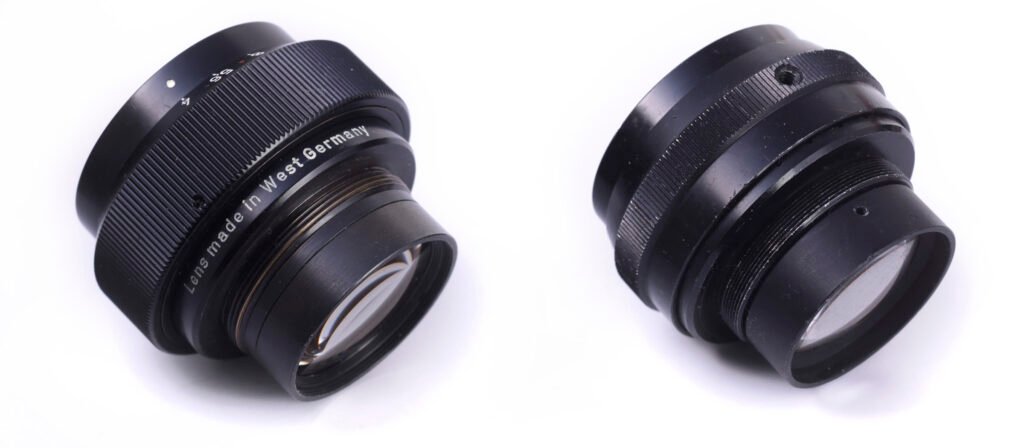
The threads are very close in diameter though.
Without any real evidence/official mention the relation between the Tominon N.J.K. 60/4 prototype lens and the Macro-Yashinon is an assumption, however because my sample of the former is missing an aperture it actually revealed that the lens would open up to f/2.8 without a limiting diaphragm. And apart from being significantly lower in contrast – which might be caused by different coatings – the lack of protection from stray light (the Macro-Yashinon has a deeply recessed front element) and the unfortunate fact that the Tominon N.J.K. 60/4 exhibits drastic scratches all over its elements in the front and rear surface – the images they produce look pretty much identical to me.


Another significantly important similarity are the lens reflections. If it weren’t for the differences in coating colors, I’d be inclined to call those identical.


Because the Zeiss S-Planar 60/4 has more or less identical front and rear elements in diameter plus a visible internal baffle, I am quite confident in my assumption that it would also be a 60/2.8 lens without it. While that would mean an additional similarity, lens reflections tell a different story though and differ in significant ways from the above mentioned Tominon N.J.K. 60/4 and Macro-Yashinon 60/2.8 lenses. The lens was called Planar by Zeiss Oberkochen for branding reasons, however Stephan (from artaphot.ch) made me aware of the fact that it actually is a Xenotar type lens. Lens designs like that had already been used numerous times by japanese manufacturers before, so it seems unlikely that the Tominon N.J.K. was some kind of direct copy from Zeiss. Still, the resemblance is certainly there.
With all of this in mind one would probably expect the more famous Contax S-Planar T* 60/2.8 to be based on its older f/4 namesake as well, however the lens design reveals it to be a different (true Planar) design with 6 elements. So even if we assume that the development of this Tominon-prototype fell into the time of Yashica/Zeiss cooperation, a slightly similar lens design (as you can see below) is certainly no indicator of a real connection and most likely just a coincidence or based on mere ‘inspiration’ by other developments, as it’s typical for this and many other industries.
There are at least two additional (almost) identical versions of the Macro-Yashinon 60/2.8 in the Mamiya Macro Sekor 60/2.8 and Rikenon 60/2.8, which seems to make the existence of some cooperation or licencing agreement among those Japanese companies an inevitability. It can be said in general, that cooperation among Japanese lens-manufacturers at that time was way more common and widespread than the form of intercontinental partnership Yashica and Zeiss agreed upon, which makes it incredibly hard to find definitive proof of who owned some designs or created which lens/parts for whom.
You can compare the optical designs of the Tomioka-made Macro-Yashinon, the Zeiss S-Planar 60/4 and Contax S-Planar 60/2.8 here:




An interesting aside: Even though one might assume an improved Zeiss 6 element design would clearly outperform the older, simpler 5 element design, Tomioka managed to create a lens in the Macro-Yashinon which is still considered to be pretty much on equal footing with the well-regarded S-Planar equivalent by many.
Recently the lens shown below appeared on Yahoo Auctions in Japan – an Auto Macro Tominon 60/2.8 with Tomioka Kogaku labeling as well (making it distinctly different from the Tomioka labeling on the Macro-Yashinon 60/2.8. From its serial number it seems to be later than all the Macro-Yashinons I’ve seen. It’s possible that this doesn’t mean much though, as the Macro Yashinons have really weird serial numbers: The one I own has the No.486066 while every other lens in that series I’ve seen so far, has a serial number starting with 68.

But back on the topic of that N.J.K. Tominon 60/4: its labeling is very interesting and extremely weird in terms of microtypography.
M=Tominon. F4. 60mm № 1000030 N.J.K.


Yes, the M= really is red and the N.J.K. blue…
The No features what looks like a flipped ö Umlaut after the N and while I’m more than used to many Umlauts (as someone living in the only country on earth, which starts with one), that’s a thing even I have never seen before. It’s also notable, that there is a full stop behind Tominon and F4.
What they wanted to tell us with N.J.K. is anybody’s guess. Here are some fun examples fellow Yashica and Tomioka lens-enthusiast lumiworx and I came up with on the Yashica Board:
Nippon Japan Kogaku
Nagano Japan Komine
Nitto Japan Kogaku
Once again my fellow flickr friend and lens enthusiast 情事針寸II tried to help me out by asking a friend, who has been part of the Japanese photography/film/broadcasting industry for decades for his thoughts on the meaning of those letters. They certainly were very interesting as well, because he mentioned having seen “N.K.J.” engravings on Nikon enlarging lenses for export products numerous times (N= Nippon, K=Kogaku, J=Japan), and also occasionally seen “N.J.K.” engravings on the Nikon lenses.
So was this lens intended for export as well? If so, what could have been its destination? And why would a Nikon reference be on there? Was it perhaps made as a prototype for Nikon? A possible candidate for an EL Nikkor lens, perhaps? Well, from my limited experience with Nikon, we’ll likely won’t hear anything from them on the matter.
When I was reminded of the (quite likely) close ties between Tomioka and Cosina and found out during my research that its company name was changed to Cosina with a C from Koshina, I thought of this possibility as well:
Nagano Japan Koshina
And finally – keeping in mind that the Macro-Yashinon was ultimately released for the J-series Yashica cameras – here’s another completely different approach:
New J-series Kamera
And the red M=? To my knowledge M in red is often used for ‘magnification’. For example on certain Zeiss lenses with a particular magnification optimization, like the S-Sonnar or some S-Planar lenses and also Nikon’s Ultra-Micro-Nikkor series. With ‘Tominon’ following that doesn’t make a lot of sense here though.
So another option would be ‘Manufacturer’ or ‘Model’ with the latter sounding more convincing to me than anything else. After all we don’t know when that lens was made exactly, so it’s possible that ‘Tominon’ referred to a particular lens design at that time, like ‘Tessar’ or ‘Heliar’ which have been used for the same type of construction over a long period of time.
And finally two more options: It could stand for ‘Macro’ or ‘Multi Coating’. (red letters are also quite common for that).
What about the Osawa Tominon EL 60/4?
This question was rightfully asked by member TimoK in a thread on the dprevived forum, when I asked for opinions and theories on the matter. While they do look identical in terms of specs, they actually are very different in many aspects.

| Osawa Tominon EL 60/4 | Tominon N.J.K. 60/4 | |
| Lens Design: | 8/4 | 5/4 |
| Length: | 61 mm | 36 mm |
| Weight: | 164 g | 86 g |
| Coating | Blue/purple (likely MC) | Yellow |
| Aperture | 4-22 | 4-11 (limited) |
All that being said, none of those differences mean that it’s impossible or even unlikely that the Tominon N.J.K. was indeed an intended enlarging lens design for what later became the Osawa Tominon EL family. Different demands (wide angle coverage), new developments could have made it necessary or more practical to change directions and use more complex designs when they were finalized later.
Summary
Until some more information can be found on the matter, the most likely scenario in my opinion, is that this lens was some early attempt by Tomioka to make an industrial grade enlarger/printing/repro/microfilm reduction lens (hence the 60 mm f/4 specs and the limited aperture-range typical for such lenses), most likely dating back to the middle to late 1960s and perhaps inspired by (not based on) the Zeiss S-Planar 60 mm f/4, which had already existed since 1963. Whether it ever went into production in its original intended form or not, it seems to have been used later as the basis for the well-regarded M42 Macro-Yashinon 60 mm f/2.8 taking lens, which was likely released in 1970 (according to Yashica expert biggles3 on the Yashica Forum) as well as its Mamiya and Rikenon counterparts. Of course a reversed chronological order (an industrial 60/4 lens based on the Macro-Yashinon 60/2.8 design) is possible as well. What makes the first look more realistic is the difference in coatings.
As mentioned before my sample of this prototype lens is badly damaged and missing its aperture blades – however it is still able to capture some images. Even though they’re low contrast and require some more post-processing, I wanted to show you some results regardless:




Copal-E35 85/5.6

Contrary to the Tominon 60/4, where I was at least able to find some possible links and somewhat speculative, but not unreasonable explanations, this lens is so different in almost every aspect, that it raises a lot of questions, which are probably destined to remain unanswered.
- it looks completely different… and I really mean completely:
– silver
– smooth metal with 3 engraved rings
– different colored coating (blue, likely single coated)
– aperture ring on the bottom of the lens - it has different specs and markings
– it has a serial number
– its max. aperture is f/5.6
– its focal length is marked in cm: 8.5 cm
– no “Made in Japan” signifier - It seems to have a completely different lens design
– most likely a Triplet
Judging by its appearance and the blue coatings my guess would be that this lens was either made by Copal themselves or perhaps by Nitto Kogaku. Another possible candidate would be Tamron (or rather Taisei Kogaku as they would have been called at the time).

COPAL-E35 | S KOMINAR-E
Focal length in cm & big spaces between the letters/numbers
Metal construction outside & plastic construction with similar rings inside
Aperture ring almost extends to the rear of the lens
Given that it’s a triplet and not very fast, it doesn’t perform on the level of the other lenses mentioned here in terms of sharpness, detail or performance across the frame (it seems to have a rather limited image circle for a focal length of 85 mm), however it has a nice 10-bladed aperture, so it can still be used effectively for certain experiments.
I’ve tried to reach out to Nidec (current company name of Copal) for clarification, but unfortunately didn’t get any response.




The Copal-E18C/E36(C)/E66(C)/E90(C) & Tominon-MC series
If I would be forced to choose three lenses to keep, the chance of one of those being part of this grand family of Tomioka-made minilab lenses is practically guaranteed. (Yes, even if that coice includes regular big-name taking lenses, so “Goodbye, Summicron! Goodbye Apo-Lanthar!”)
I admit that part of it may be caused by a feeling of nostalgia, because they were probably my first “lucky find”, where my gut feeling told me that they must be special, even though I only found proof of it significantly later. It may also be influenced by my tendency to root for the underdog, the underappreciated, because those lenses never got a lot of attention, at least outside of their original use case. But all of that combined doesn’t hold a candle to the most convincing aspect of them: Their incredible optical quality and wonderful feel. All of them are tiny, lightweight lenses, unassuming but clearly well-built in order to be reliable work-horses in the demanding environment they were used in day in, day out.
Here’s a quick overview of the big family of lenses (And of course… as with any family photo, someone was late or sick – you know that stuff!):
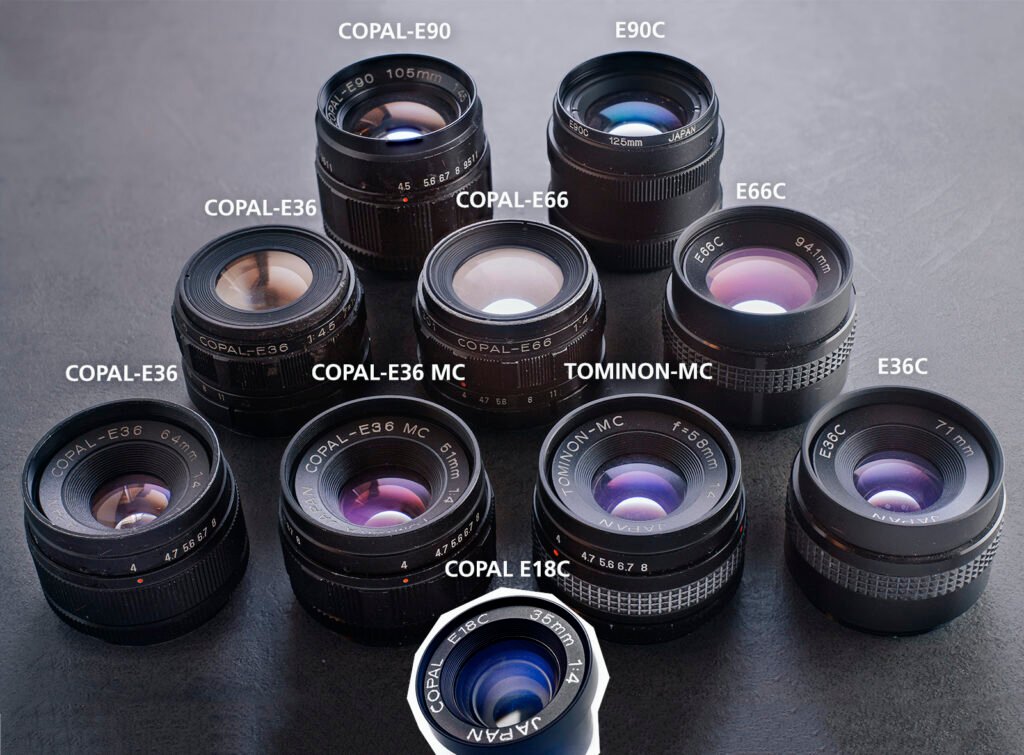
As you can see C and MC don’t seem to be indicating the same thing (coating) but different aspects. Why the fixed aperture lenses are marked by a C is anybody’s guess.
E18C – in focal lengths of 35 and 40 mm (likely made for the 18×24 mm format)
There are only two known lenses here and both are the fixed C version and in a barrel mount without any thread. They sometimes come with a threaded clamp-adapter though.
Likely lens construction: 6 elements in 4 groups
E36(C) – in focal lengths from 48 to 100 mm (likely made for the 24×36 mm format)
By far the biggest group and with lots of variety in naming and at least 4 different looking versions. Almost all of the lenses with aperture (one exception) have a limited range from f/4 to f/8.
Likely lens construction: 6 elements in 4 groups (Plasmat)
E66(C) – in focal lengths of 75, 93 and 94.1 mm (likely made for 6×6 cm format)
Only a couple of lenses, but lots of variety within. All of the E66 lenses with aperture have a limited range from f/4 to f/11, apart from the unusual 75 mm, which has got a range from f/2.8 to f/11. And all of those with variable aperture have a serial number.
Likely lens construction: 6 elements in 4 groups (asymmetrical combination of Plasmat & Double Gauss in case of the 75/2.8, as shown further down)
E90(C) – in focal lengths of 105, 115 to 125 mm (likely made for 6×9 cm format)
The lenses with variable aperture have a limited range from f/4.5 to f/11 and a protruding rear element, which the C versions don’t have. The latter also look quite different and have a more modern appearance.
Likely lens construction: 6 elements in 4 groups (Plasmat)
C = fixed aperture version of the lens, usually stopped down by an internal disk.
As much as I’m able to rave about the outstanding optical quality of these lenses, their optical design seems rather ordinary for the most part. Because all of those lenses (with exception of the E66 series, as well as the E36 100 mm one) seem to be rather symmetrical 6 elements in 4 groups Plasmat designs.

6 elements in 4 groups Plasmat design.
Many of the EXXC lenses come with fixed aperture discs inside. These have different diameters, which are used to stop down the lenses (from what would likely be E36C & E66C = f/4 and E90C = f/4.5) to a certain f-stop more suitable for the application. So far I’ve seen at least 4 different diameters. These disks can be removed when needed. If the optics are indeed identical to the lenses with variable aperture this shouldn’t result in any significant degradation of image quality.








It’s also possible to swap the rear elements from one of the C lenses with one from a lens with aperture by the way, which can be handy, if you have a defective sample of the (usually more rare EXX lenses) and are able to find a corresponding C version lens. I’ve done that to my Copal-E36 82 mm lens mentioned below, if you want to see some samples.

Naming and chronological order
1st design: These lenses have an evenly knurled aperture ring and a ring in the same optic below, which is finer than the one on the 2nd and 3rd designs. The lenses with this look I’ve encountered so far are all labeled Tomioka Copal-E36 (no MC, no Tominon). They may have multicoating, even though it’s not indicated, one layer looks blue (similar to the Copal-E35) and one yellow. The inscriptions on these types of lenses look yellowish and probably harder to see in a dark environment. Their fine knurling might have made them a bit harder to operate inside of a minilab and their design also puts them at a higher risk of rolling when put on a smooth or angled surface. All of these things combined make me think that these lenses are the oldest type of the three shown. That being said, don’t hesitate to pick one up, if it does appear to be in decent shape. One of mine is, and it’s quite excellent.
2nd design: These are the most common type seen out there. They can be found with all types of coatings (the same as the 1st design), labeled Tomioka-Copal-E36 with and without MC, Tominon-E36 and Tominon-MC. They feature a scalloped ring design which (as Robert OToole points out in one of his reviews) improves the grip on the lens and prevents it from easily rolling away. The visibility of the inscription varies: There are samples identical to the yellowish font color the 1st version shows, but the vast majority features white inscriptions.
3rd design: Doesn’t seem to be as common and features a rubber band around the aperture ring with a square pattern (you know, the tiny pyramids, often used on Asahi/Pentax lenses). All of these lenses I’ve encountered are multi coated, all of them have a Tominon-MC inscription. All of them were in pretty good shape and the rubber band intact. This makes me believe they are the newest type as some of the wear and tear the (fully metal) 1st and 2nd design lenses show, would likely have impacted the rubber significantly.
type-0 design: The reason I don’t include this one in the range of different designs mentioned, is that it resembles the E66 lenses more than any other E36 one, from which it differs in a number of other ways as well, and only applies to one single lens from what I could gather so far: The Copal-E36 100/4.5 has an unusually long focal length for the E36 series, a different maximum aperture to all of the other lenses + the very different design. If I would have to guess, I’d suspect it to be one of the oldest of the bunch.
All of the Copal-E66 lenses I’ve spotted or tried so far, look like they may be among the oldest lenses of the family as well aren’t up to the standards of most E36 lenses in terms of CA correction and contrast (likely due to the coatings). That being said the E66C lenses I’ve seen look like they could have been made significantly later.
All of the E90 lenses I’m aware of are labeled Tomioka Copal-E90 and thus (in my estimation) probably made at the same time as the identically labeled E36 variants. And once again the E90C pendants – which look very differently – give the impression of having been made very late compared to all the other variants. Let’s remember that many of these lenses were supposedly used in minilabs made by a cooperation of Agfa and Copal, who only started joining forces in that sector in 1983. Perhaps much of the missing Tomioka or Tominon labels on all of these E66C and E90C lenses can be explained by them having been made after Yashica/Tomioka was acquired by Kyocera and no longer being able to produce them. It’s conceivable that Copal’s own lens production facilities or some other third party lens manufacturer from Japan like Cosina or Tamron might have taken on the task of manufacturing these lenses.
Here’s my attempt at creating a timeline for the E18/36/66/90(C) series:

The main intention thus is only to give anyone who finds one or several of those lenses an idea, where their sample(s) might fit in in the grand scheme of things.
If you find any material or clues pointing towards a different sequence, please let me know.
As with almost everything Tomioka there’s no definitive proof, but it’s been estimated that these lenses were only produced for a couple of years in the late 1970s/early 1980s. That a vast majority of them doesn’t have any serial numbers on them doesn’t help of course.
User Biggles3 from the Yashica Forum shared this estimation about the production:
“I think production only lasted about 5-6 years and had ceased completely by the late 1980s.”
While it’s possible that it was indeed this condensed, I get the feeling from some of the early E36 and E66 lenses that there might be at least a decade between them and the most modern looking E66C, E90C samples. If some of the latter were indeed used in Agfa MSC minilabs (like some sellers of those stated), it seems likely that at least some variants might have been produced into the early 90s.
[Tomioka] Copal-E18C 35/4
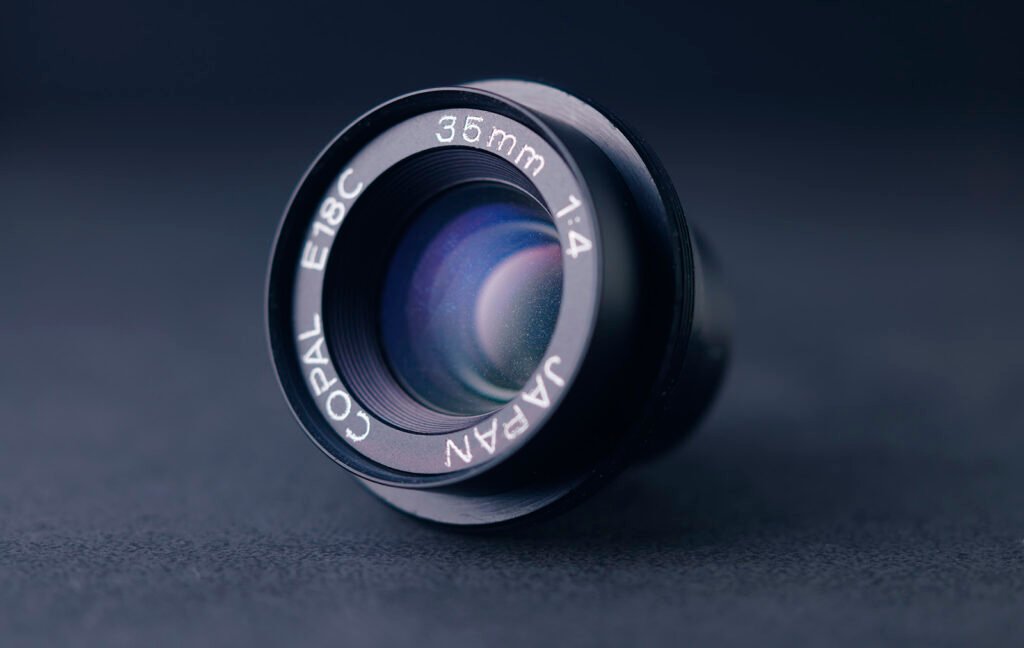
It should be mentioned that there is no definitive proof of Tomioka’s involvement in the production of this lens, however I trust the confirmation by Illiah Borg (mentioned above under the Yashica/Zeiss connection) that these were in fact made by Tomioka. It certainly appears to be the most likely option, given how many of the other lenses in this family were surely made by Tomioka.
This lens has been tested for macro use at 3.4x by Robert Otoole and while it wasn’t quite up to the excellent Noritsu 32 mm and some others, it still is quite good apart from some issues with Chromatic Abberations. I found the severity of those to vary quite a bit, depending on the tube lens which is used in a stacked setup.
Truth be told I was quite underwhelmed by its performance on my first tries. However, when I was once measuring a lot of the threads on my lenses (in order to give some detail information to the vast deltalenses archive), I took it out again and discovered that it has an 37.5 x 0.5 mm thread. That‘s a really unusual mounting thread but exactly the filter thread of almost all the other focal length lenses in the (Tomioka) Copal-E36/90(C)/Tominon-MC series. Because I already had a 37.5 x 0.5 mm lens hood I was able to just screw the tiny (reversed) E18C on top of the Copal-E90 105/4.5 lens and this time the lens surprised me in a very positive way.

Since then I’ve captured some of my most popular high magnification shots with this lens and particularly appreciate the setup for its compact size and light weight.
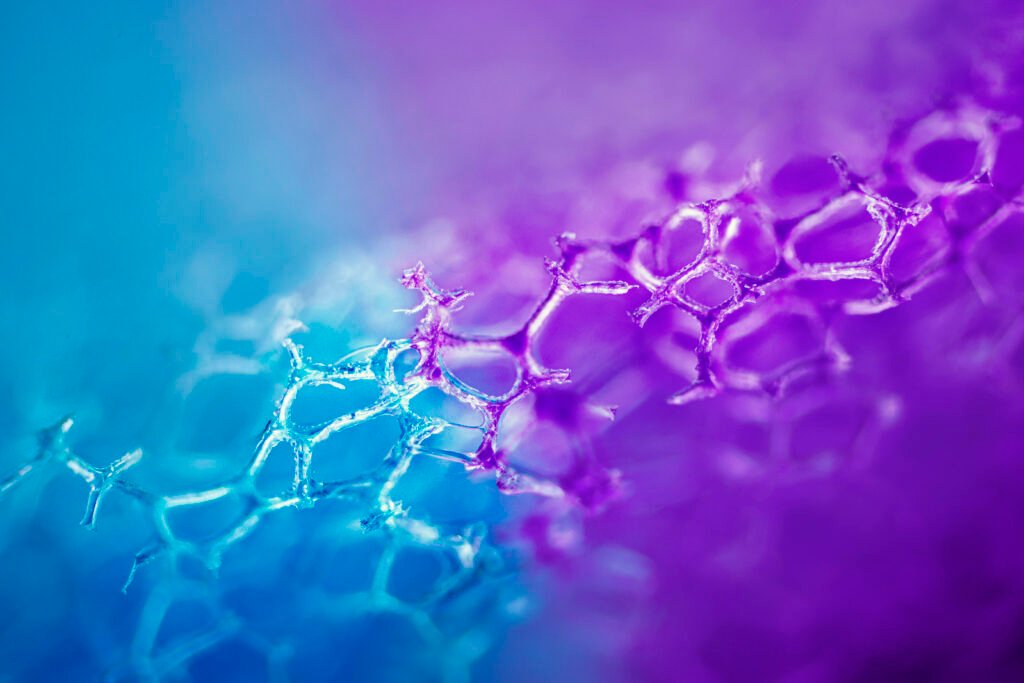




[Tomioka] Copal-E18C 40/4

The 40 mm version of the Copal-E18C is pretty much identical to the 35 mm one, however it shows slightly better performance as far as chromatic abberations are concerned. The biggest difference is, that it covers the full frame sensor, even at infinity, so it’s a lot more versatile as a close-up lens. Robert OToole mentions in his review that its internal baffle (limiting it to f/4) can be removed in order to increase the maximum aperture to f/2, however it isn’t really recommended, as image quality will be affected negatively.







Tomioka Copal-E36(C) 48/4 (also labeled Tominon-MC or Tominon-E36 MC)

I would rate this among the best normal macro lenses ever made. As I’m not too keen on constant comparison tests, take it with a grain of salt, but after using multiple samples of this lens for a significant amount of time, I’d rate it above all of the 50 mm enlarging lenses, including big names, such as the Rodenstock Apo Rodagon N 50/2.8, Schneider Kreuznach Componon-S 50/2.8, Leitz Focotar-2 50/4.5, Nikon El-Nikkor N 50/2.8, Minolta C.E. Rokkor 50/2.8 etc. There doesn’t seem to be a single lens, which can keep up with the excellent sharpness + correction of this lens. At least close-up. As its image circle doesn’t seem excessive for the 35 mm format it was designed for, it’s possible that a couple of 50 mm ELs with outstanding performance at infinity, might outperform it at distance, particularly in the corners. I’ve tested it against the Apo-Rodagon N 50/2.8 (which is known as one of the best enlarging lenses at infinity) and the Tominon-MC is visibly superior at f/4 and equally good at f/8.
I’ve never seen a shorter focal length among the E36 series, but it might be out there of course. While 48 mm isn’t completley unusual for an enlarging-type lens (Nitto Kogaku, Agfa and Angenieux have produced lenses with that focal length…), it’s unusual enough to be reminded about the Noritsu Tamron 48.5 mm lens, which also was used in a minilab application. In a direct comparison the Tominon-MC lens proved to be superior in every aspect, apart from being limited to the maximum aperture of f/4 of course.




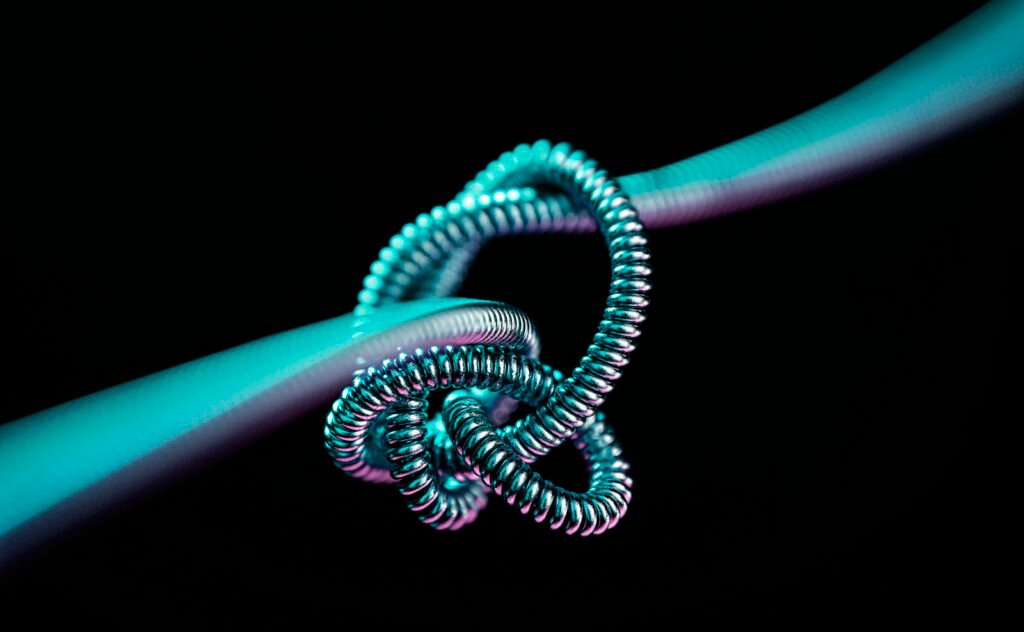


Tomioka Copal-E36(C) 51/4 (also labeled Tominon-MC)

Basically the same as the 48/4 – just superb in every way. It’s perhaps interesting to know that so far no 50 mm lens has shown up. Still, in the battle for the “weirdest focal length, which is almost but not quite 50 mm” this lens is a relatively boring competitor, compared to the Tamron Noritsu 48.5/2.8 and the Fujinon-EFC 49.9/5.6.




Tomioka Copal-E36(C) 55/4 (usually labeled Tominon-E36 MC)

The interesting thing about this particular lens, is that it’s the only lens I’ve seen so far, which features a red MC on the inscription. MC (which usually stands for Multi Coating) has been added to many lenses, particularly when that technical possibility first came up. That it’s marked in red might either indicate that this was one of the first samples, which got that treatment, or rather that it marks a new kind of Multi Coating. From the overall look of the lens (it features the 2nd E36 design as described above) I’m inclined to think the latter is more likely.





The “Rikenon 55 mm f/1.4”, “Tomioka Auto-Cosinon 55 mm f/1.2” and “Tominon-E36 MC 55 mm f/4”.
Tomioka Copal-E36(C) 58/4 (usually labeled Tominon-MC)

I feel like I’m gonna repeat myself a lot here, but of course this is another excellent lens. Because there are other outstanding close-up optimised lenses in the focal length around 60 mm, I’ve tried to compare it to some of them, namely the Schneider Kreuznach Apo-Componon 60/4 Makro-Iris, as well as the Carl Zeiss S-Planar 60/4. While there are tiny differences between these excellent lenses, they are so small, that user error (I’m not a professional lens tester) could easily be the reason for those. Additionally it also seems like the Copal-E36 58/4 is actually slightly faster than f/4, which makes completely accurate comparisons almost impossible.
It’s suffice to say these are all great lenses, but while the S-Planar (300-400 $) and Apo-Componon (200-250 $) tend to be quite pricey, the Copal-E36 lenses can be found occasionally for really reasonable prices, with some luck and patience.

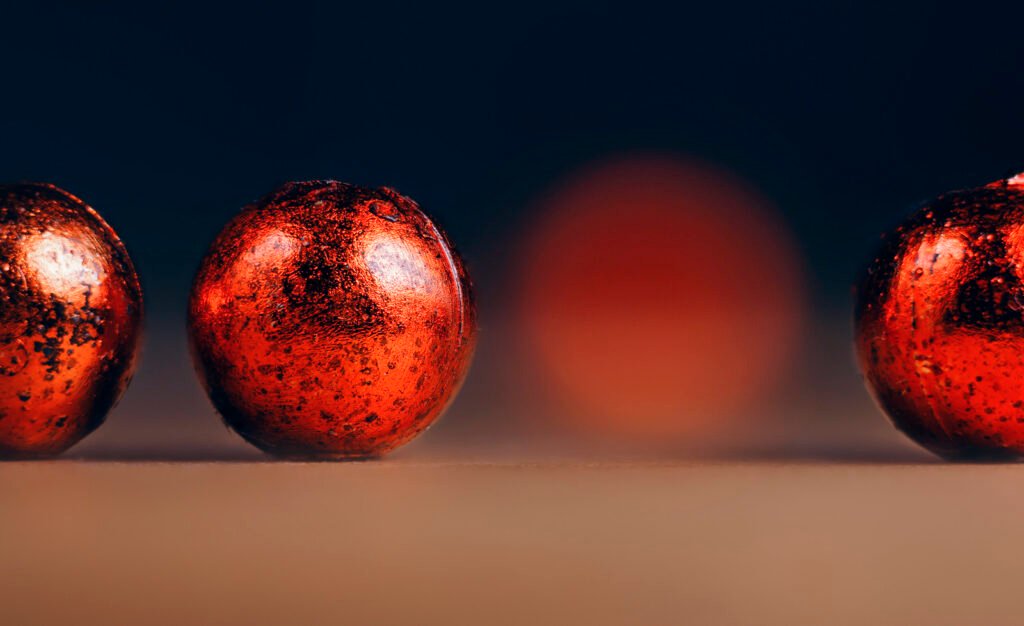






Tomioka Copal-E36(C) 60/4

I don’t own this lens, but it would be interesting to compare it to the Tominon N.J.K. 60/4 (prototype lens) mentioned above to know for sure if my theory (that it is indeed a different construction) has any merit, or there is a connection after all.
Another observation you might have probably made by now, is how close many of these lenses are in their focal length. While enlarging lenses are typically made in pretty usual focal lengths like 40, 50, 60, 80, 105 mm etc. there are six focal lengths present among the E18C/E36C range between 40 and 60 mm. And still this wasn’t enough variety apparently to cover all the needs of professional labs, which is easily detuctible by the high likelyhood of those lenses coming with some kind of diopter on them.
While I wouldn’t necessarily recommend using those screw-on diopter lenses (even though a high-quality production might be assumed there as well) I’m thankful for the fact that most of the EXXC lenses have a filter thread because of them.
Tomioka Copal-E36(C) 64/4
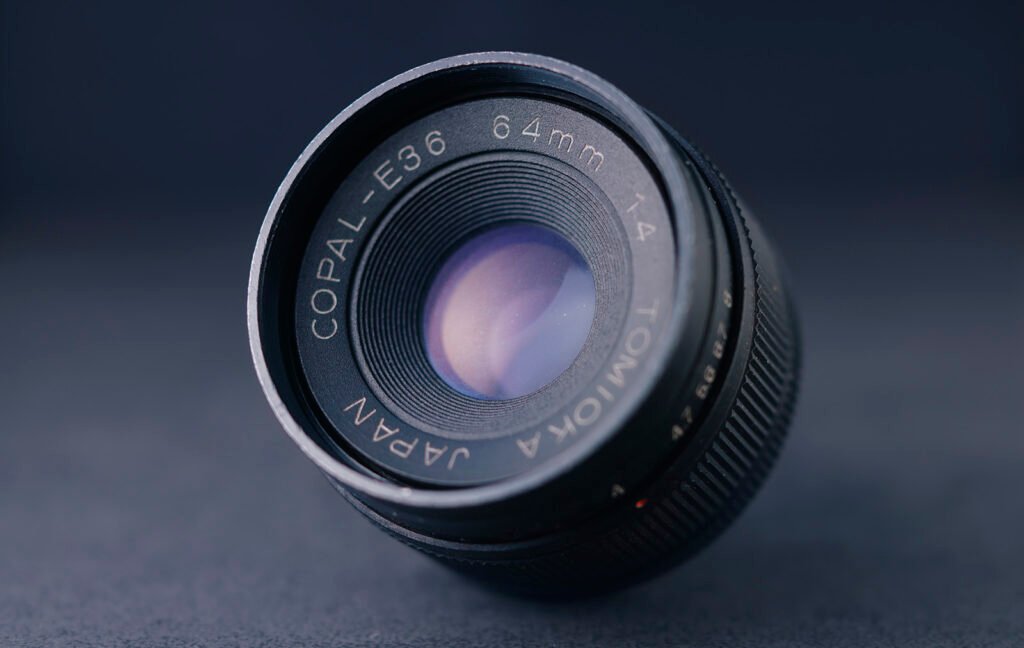
This one has a special look with a evenly grooved aperture ring. Judging by the feel and visibly paled inscriptions, I believe it to be older than all the other design variants, apart from the weird E36 100 mm. So far it’s one of two lenses I’ve seen which look like that, but I’m pretty sure there must be others like that out there.
Even though it feels quite old, it’s still surprisingly sharp. It lacks the ultimate contrast of the later Tominon MC lenses though, so either it is single coated or the coating is not as effective.



Tomioka Copal-E36(C) 68/4

So far I haven’t seen any version of this lens with varible aperture – I’m pretty sure it exists though. The C version I’ve tried has one of the (above mentioned) fixed aperture discs inside with a diameter of 18 mm, which (from comparing it to other lenses) means it’s stopped down to around f/5.6.
So while its image quality is outstanding and there’s pretty much zero trace of chromatic abberations visible, I can’t comment on its performance wide open. As far as its look and coatings are concerned it seems to be one of the newer lenses.


Tomioka Copal-E36(C) 71/4 (also labeled Tominon-E36 MC)

This lens was the main reason I got so interested in the whole family of lenses in the first place. It’s great among a wide range of magnifications and features a nice focal length for close-up and macro photography and has a more than decently size image circle, making tilt/shift photography a real possibility.
If you take a look at the unusual green coating (a couple of other E36 lenses show a similar color, but none matches the bright green from this one) the words of Tim Harris (mentioned earlier) might cross your mind once again, like it happened to me:
“…none of my parts lenses have any parts that will fit each other and I have not found any two that had compatible parts with each other every time I get into one it is an adventure. HOW COULD THIS BE!!!???. I do rigorous testing on these lenses also and they have different sharpness and subtly different bokeh the color rendering can be way different, in fact I have tested a few that looked completely different than my standard, which is my lens. The worst of them are still great, I would say that one in 5 is special and one in ten is magic…”
Take a look at these lenses shown here… do your realize how different they all are? How hard it is, to spot any patterns or resemblance? Yes, almost all of theme share the EXX(C) designation, but apart from that, there are so many variants and combinations, it’s like they all were hand-crafted, almost individually. Have they just been made at different times? Or in different manufacturing plants? Perhaps outsourced in part to Copal, Cosina or someone else? Or just made by different people at Tomioka? I have no idea to be honest. But many of them seem to be quite unique and that can either be a good sign (thinking of tiny high-grade, specialized production runs for individual customers), or one of total chaos (outsourcing without clear instructions or quality standards).
But back to the things that really matter… like the performance of those lenses when used for photography. Do you get part of my fascination for these mysterious lenses yet?


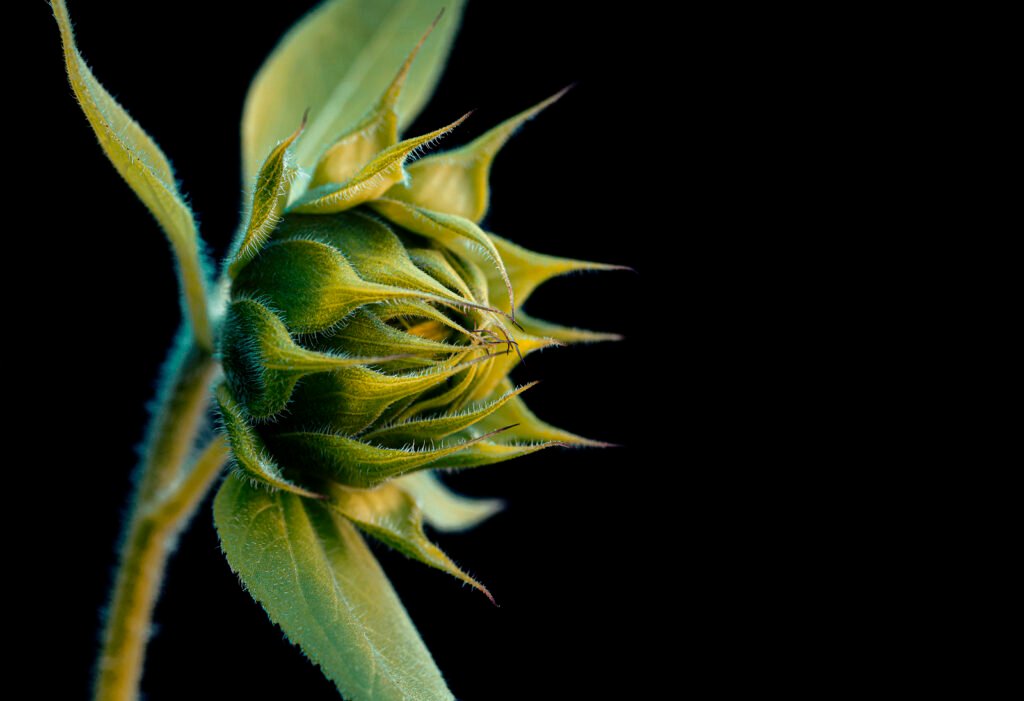


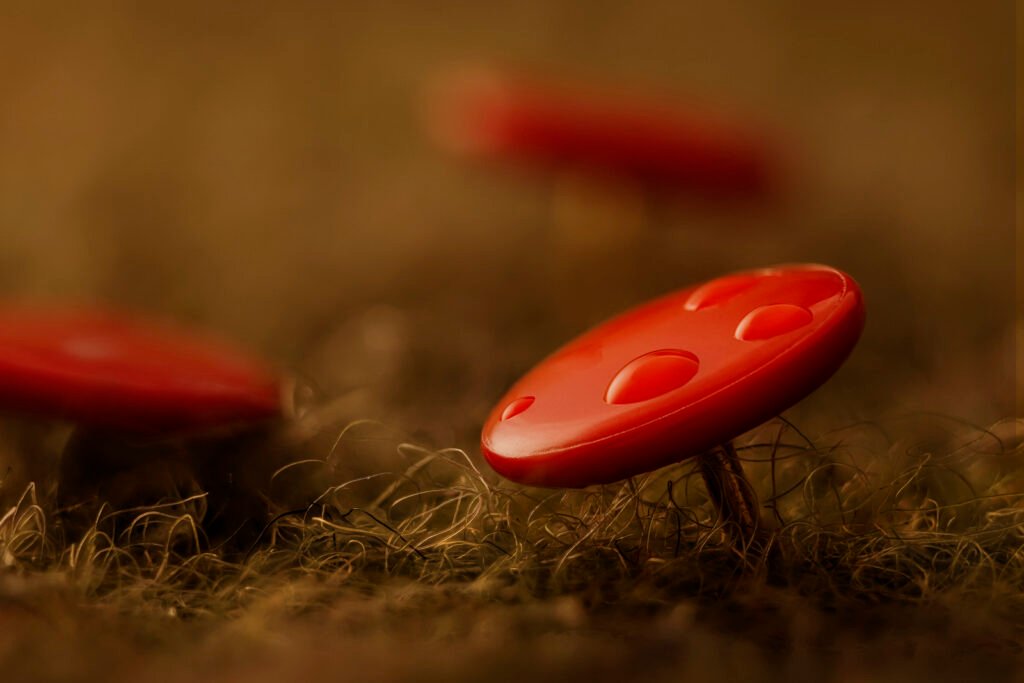

Tomioka Copal-E36(C) 76/4

My sample is a well worn lens, which seems to have done its job for a significant time. It still performs more than reasonably well overall, however I was able to get some (yellow and bluish) chromatic abberations (CA) out of it in really challenging lighting conditions:


While you won’t see it in most cases, there might be some instances where a couple of these lenses show some CAs. It is in fact already somewhat visible in the SOOC image on the left, however it takes a lot of processing to really make them distracting. So in terms of correction even some of the oldest lenses of the family seem fine.
Take a look at some sample shots below, to see for yourself:




Tomioka Copal-E36(C) 80/4

This is another lens which exists in (at least) two different designs. One of them looks like the 64 mm lens further up, the other one is shown above. Both look identical in terms of coatings, inscription and wear though, so it seems like they might have been produced in very close proximity to one another. This – in combination with the missing MC on the inscription, strenghtened my suspicion that these might be the 1st and 2nd versions of the E36 series. A 80 mm version with fixed focal length appears to have more modern coatings.


Tomioka Copal-E36(C) 82/4

This lens undertook quite a journey to finally get into my hands… It was sold in Brazil and let me tell you, it wasn’t easy acquiring and delivering it to Europe. In addition to all the hassle, it also turned out to be in a pretty bad condition unfortunately. As a last-resort solution I decided to try and replace the completely hazy rear group of the lens (which can be removed quite easily with these lenses) with one from an 80 mm E36C lens. The results can be seen below. While it surely didn’t put the lens back in its glory days in terms of quality, it managed to transform a completely unusable lens into a fun and capable tool again.
As the name suggests this lens still belongs to the E36 group and thus probably used for processing of 35 mm film. However it still features an image circle big enough to allow for some tilt/shift movements. In fact it’s one of the most effective lenses for tilt/shift shooting that I’ve tried so far.







Tomioka Copal-E36(C) 86/4

Ray Parkhurst – a macro lens expert specialized on coin photography – has tested a variety of the E36 and E66 lenses and compared them to some of the best lenses out there on his macrocoins site. The 86 mm lenses were among the best of the best there. Ray was a great help in letting me get a better overview of the whole range of lenses.

While I haven’t used it to any significant extent, it proved to be another great lens, naturally also able to provide some movements for tilt/shift experiments.


Tomioka Copal-E36(C) 90/4

Another interesting lens in terms of its coatings – it seems to be a newer one. Ray Parkhurst (see above) has included one of those in his tests, where it performed very well, but not quite on the level of the 86 mm lens above.

Image by Ray Parkhurst (www.macrocoins.com)


The samples below are from a japanese blog. Unfortunately there’s not a lot of information shared about its performance.
Would you be surprised if I told you I believe this to be another excellent lens regardless? It’s really impressive how consistent the whole series of lenses seems to perform.


Tomioka Copal-E36(C) 100/4.5

Apart from the E35 lens and the (very likely) prototype Tominon N.J.K. this is probably the weirdest lens of the bunch. It’s construction and coating looks very similar to the E66 lenses and the maximum aperture value of f/4.5 differs from every other E36 sample. With a focal length of 100 mm it’s also the longest and appears to have an image circle in the range of the E66 lenses (which, as stated above, we assume to cover a 6×6 medium format).
Adding all of this information together, I’m inclined to believe that this lens dates back to the very early stages of the series, where there was no distinction between E36 and E66 present yet. The lens feels very old and worn compared to many others and also doesn’t show any of the strong colored reflections, indicative of the more modern Multi Coating. To further strengthen the connection to the E66 lenses, it features the same (or at least very similar) lens design – an asymmetrical 6/4 construction, explained in some more detail on the next lens.
While I wouldn’t have assumed that this lens would hold up to the E36 lenses, it actually is quite impressive and likely won’t have to shy away from a comparison with most notable enlarging lenses with similar specs.

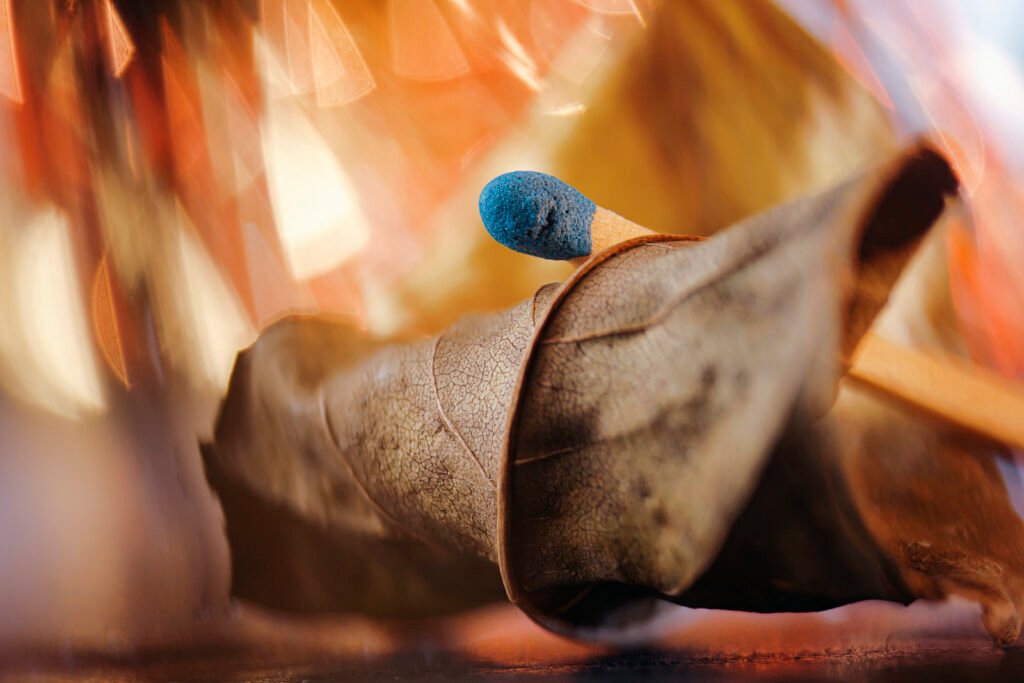
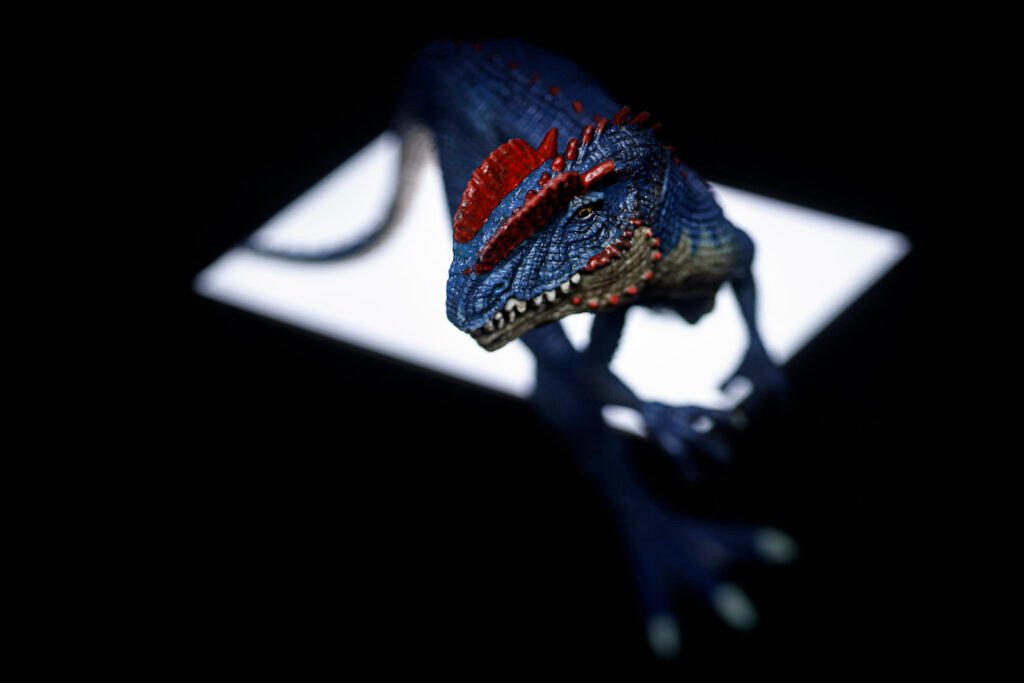

Tomioka Copal-E66(C) 75/2.8

Perhaps the most interesting lens of the whole family. This 75 mm version is the only one with a wide open aperture of f/2.8 and thus particularly well suited for being used as a taking lens. Its unique 11-blade aperture helps creating a pleasant rendering across the whole range and while it’s not particularly sharp at f/2.8 it provides a perfect combination of adequate detail and wonderful bokeh and is therefore still among my favorite lenses for close-up photography of all time.
In terms of lens construction this one – like other samples of the E66 series (at least from my observations) – seems to have a Double Gauss Triplet as the front group and a Plasmat Triplet as the rear group. It’s usually called an asymmetrical 6/4 construction and while I don’t think that’s very common, there are in fact some lenses which use a lens design like that albeit in a reversed version, like The Nikon El-Nikkor 50/2.8 (non N-version), the El Nikkor 63/3.5 and El-Nikkor N 63/2.8.
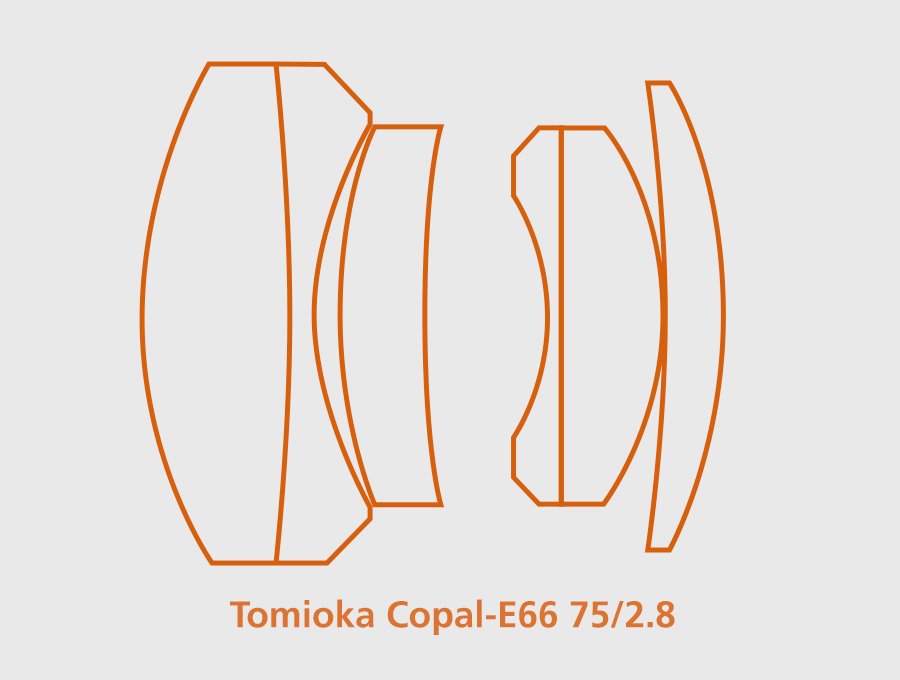
There are not many enlarging lenses with a focal length of around 75 mm and a wide-open aperture of f/2.8. The most notable ones might be the Friedrich S-Coronar 75 mm which is even faster at f/1.9 and the Meopta Meogon 80/2.8. The Zeiss S-Sonnar 62/2.5 and El-Nikkor 63/2.8 are quite a bit shorter, but also worthwhile lenses straying from the quite common 50/2.8 basis.
My observations:
Tomioka Copal-E66 75/2.8 – very smooth rendering, good sharpness, some cat eye bokeh
Nikon El-Nikkor 63/2.8 – slightly colder colors, good sharpness, rounder bokeh
S-Sonnar 62/2.5 – smoothest rendering but significant vignetting (smaller format lens) and lack of sharpness
Meogon 80/2.8 – busy rendering, slight edge glow, slightly outlined, rounder bokeh


While I appreciate both lenses for different things, this comparison is a good example of why I find the Tomioka Copal-E66 75/2.8 to be one of the perfect lenses for what I’m mainly trying to do, which is close-up and macro photography. The aforementioned balance of adequate detail, sharpness and correction and beautiful smooth bokeh and transitions is absent in the (still beautiful) but glowy and almost deconstructed image of the S-Coronar.
Here they are compared at around f/3:

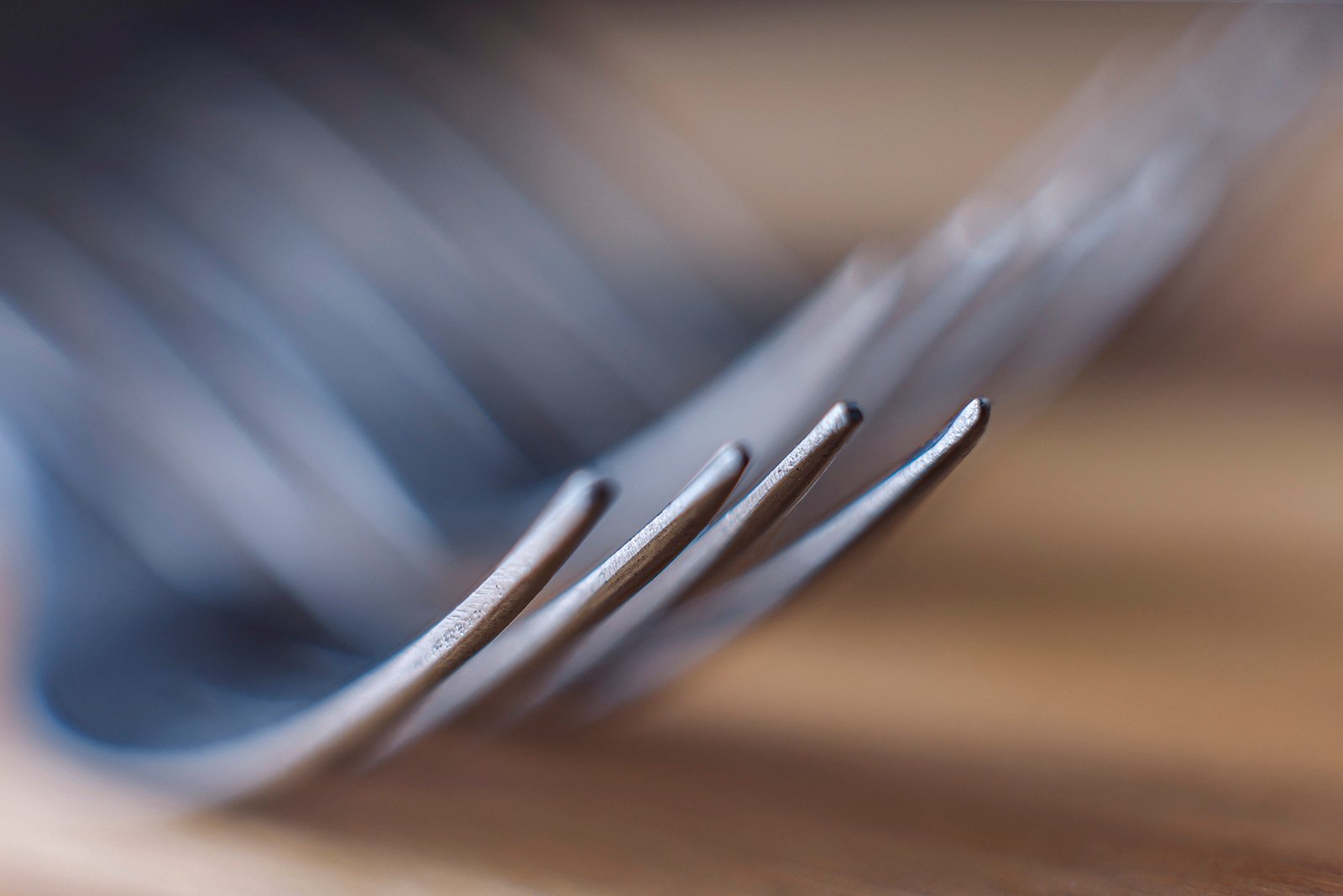
The S-Coronar has warmer colors and better contrast SOOC, however viewed at full size it becomes clear that the Tomioka lens is sharper (almost wide open) than the Friedrich lens, which is already closed-down more than a full stop. Color fringing is still visible in the results of both lenses, but not really distracting in my opinion. Both lenses have very similar smooth transitions but in terms of sharpness across the frame/coverage the Tomioka Copal-E66 lens seems to have the upper hand, with the S-Coronar only getting close to matching it in the very center.
While the latter is an even more potent, versatile and interesting option for portrait photography (because of the additional stop of light), the Tomioka lens remains my goto option for many situations because of its almost unmatched versatility.











Tomioka Copal-E66(C) 93/4

This is one of the lenses which unfortunately flares very easily. It may be due to it (very likely) being one of the older specimen and thus not having as effective coatings as the newer ones, it’s also possible that it’s caused by the construction, which doesn’t provide any real cover from stray light I think this could be vastly improved by using a lens shade, however that’s not an easy task, given the lens is missing a filter thread. Wide open it shows some visible CA’s but because of its 10-blade aperture it still produces very nice bokeh stopped down.



Tomioka Copal-E66(C) 94.1/4

I’m a bit split on the performance of this lens, because even though it seems to be in very good condition, I wasn’t able to get the full quality out of it, which I had anticipated. Perhaps its larger image circle (seems to cover 6×6 cm) allows for some very good performance on medium format cameras though. I’m not able to test it, so it has to remain an assumption for now.
And the weird focal length of 94.1 mm? It doesn’t even register with me a lot of the time… given that I’ve dealt with lenses like a Fujinon-EFC 49.9/5.6 or an Agfa 105.672/4.5 lens in our respective articles on this site already. But yeah, it’s unusual, and it would be interesting to know who and why someone needed that specific focal length.



Tomioka Copal-E90(C) 96/4.5

This lens – which apparently came out of a Noritsu minilab – seems like another exception from the rule, or rather reminded me, that there don’t seem to be any strict rules, when it comes to Tomioka designed lenses and their labeling. Because it doesn’t only look differently from all the other E90(C) lenses I’ve seen, but also has a focal length of 96 mm, while all others are over 100 mm.
A likely explanation might be the image circle though (as explained in the overview). Perhaps the 96 mm lens is the first which allows for an image circle big enough for whatever the E90 series was defined as, so while it was produced together with the 94.1 mm E66C version, it was later defined as being part of a different category. Perhaps it’s only a question of the time frame it was produced in.
Tomioka Copal-E90(C) 105/4.5

This was one of my initial two EXX lenses I’ve got and the impact it had on me can’t be overstated. Not knowing what I had in hand, I compared it to a couple of other enlarging lenses. I was honestly shocked when it matched or even beat some of the best of them with ease.

While 105 mm lenses are usually not among my most used ones on their own, they have a significant second role as tube-lenses. This one has been one of my favorites for that. It’s compact size, combined with very good correction make it a perfect choice for the task. So for a couple of the high-magnifciation shots shown with the shorter focal length lenses like the Copal E18C, this one + the following two lenses might have been included in the setup.




Tomioka Copal-E90(C) 115/4.5

I might be forgetting something, but I feel like this is the only lens with a 115 focal length that I own… and it’s another gem. For some reason my E90 version with aperture is not as well corrected as the C variant some of the other lenses in its family, which – while ultimately also a detriment of course – does seem to give it the ability to produce some nice looking subtle bubble bokeh.
As you can see below it’s no match for the ‘original’ (the Meyer Optik Trioplan 100/2.8) in terms of bokeh crazyness and outlining, but it has the added benefit of being significantly sharper and the bubbles being a bit more uniform.




This lens does have an prodruding rear element, but because it already needs a significant amount (somewhere around its focal length) of extension to focus at infinity, you’ll likely never get it anywhere close to your camera’s sensor anyway, when trying to adapt it.




Tomioka Copal-E90(C) 125/4.5

This lens is another example under the banner “Don’t knock it, till you try it” because when I got this one, I was pretty shocked at the state it was in. The lens shows some significant separation, both on the front and rear group.
It is the longest focal length I’ve ever encountered within this lens series. As mentioned in another one of my articles on Noritsu there are reports about either (motorized) zoom or varifocal lenses ultimately replacing these EXX(C) lenses inside of various minilabs. Many of those feature significantly longer focal lengths though – the longest Noritsu varifocal lens being a 135-173 mm focal length, while an Agfa featured a similar 124-178 mm one. Perhaps demands for these lenses changed, but it’s also possible that there is a longer focal length of the E90 series still out there. I don’t think I’ve seen a non-C version of this one, but I would be suprised if it didn’t exist.


Take a look how it does, when it’s compared to the Schneider Kreuznach Macro-Symmar 120/5.6, which I consider to be one of the best industrial macro lenses there is. It doesn’t match it 100% for sure, but it still is an exceptionally good lens.

(this is a cross-view stereo image – here’s a tutorial on how to view it)

Diopters and filter thread
Most of those lenses mentioned – all E36(C), except the 100mm variant, all E66C (only the C versions though) and all of the E90(C) lenses I’ve seen- have a filter thread, which is 37.5 x 0.5 mm. While that sounds like a nightmare, I was actually able to find both, lens hoods as well as step-up/down rings, without much effort, which was either a great coincidence or it has been some weird industry standard I’m not aware of. I can’t guarantee that they’re still around in significant numbers, but if you have trouble finding some adapter, please don’t hesitate to reach out.
Step-up rings are particularly useful if you want to use these lenses reversed for high-magnification macro photography. If you decide to do that also consider using a tube lens though, as it might be able to improve quality significantly. You can find some great information on tube lenses on closeuphotography.com as well as some comparison tests. Many enlarging lenses (including the longer focal length variants of this series) can be used as tube lenses to good effect.
If you find one of those lenses there’s some probability that it comes with an diopter of sorts. These are usually marked with their value (+/-) and they screw into the filter thread. They are also labeled MC, so they’re apparently Multi Coated and shouldn’t impact quality too much. In their original application those diopters were used to slightly change the focal length of certain lenses in order to be a better fit for a certain task or machine. This way of altering the specs of lenses was apparently used a lot on minilab lenses from different manufacturers. Of course you can still use diopters in the same way when adapting those lenses today. Just make sure they’re still in good shape and don’t affect image quality too much.

On the right: two samples of diopters these lenses often come with.
The Osawa Tominon EL series
AKA Hoya Super EL, Omicron EL, Bemecron EL, Bogen, Beseler Color Pro, Yashica Lens and D.O. Industries
It’s unclear if all of those lenses (so far we know of 8 differently named variants) were manufactured by Tomioka. It seems very likely though, that they were designed by them. Despite being among the better enlarging lenses, a majority of these has always been flying under the radar, which is why they often can be found as real bargains. The outward design of these lenses varies slightly, depending on the licensing partner, but they seem to be identical optically and from my own experience and what I could gather from opinions across the web, quality control doesn’t seem to have been a big issue here (You’ll find more on that issue with the Polaroid Tominons mentioned further down). So if you find one of those lenses in good condition at a low price, you usually can’t go wrong.
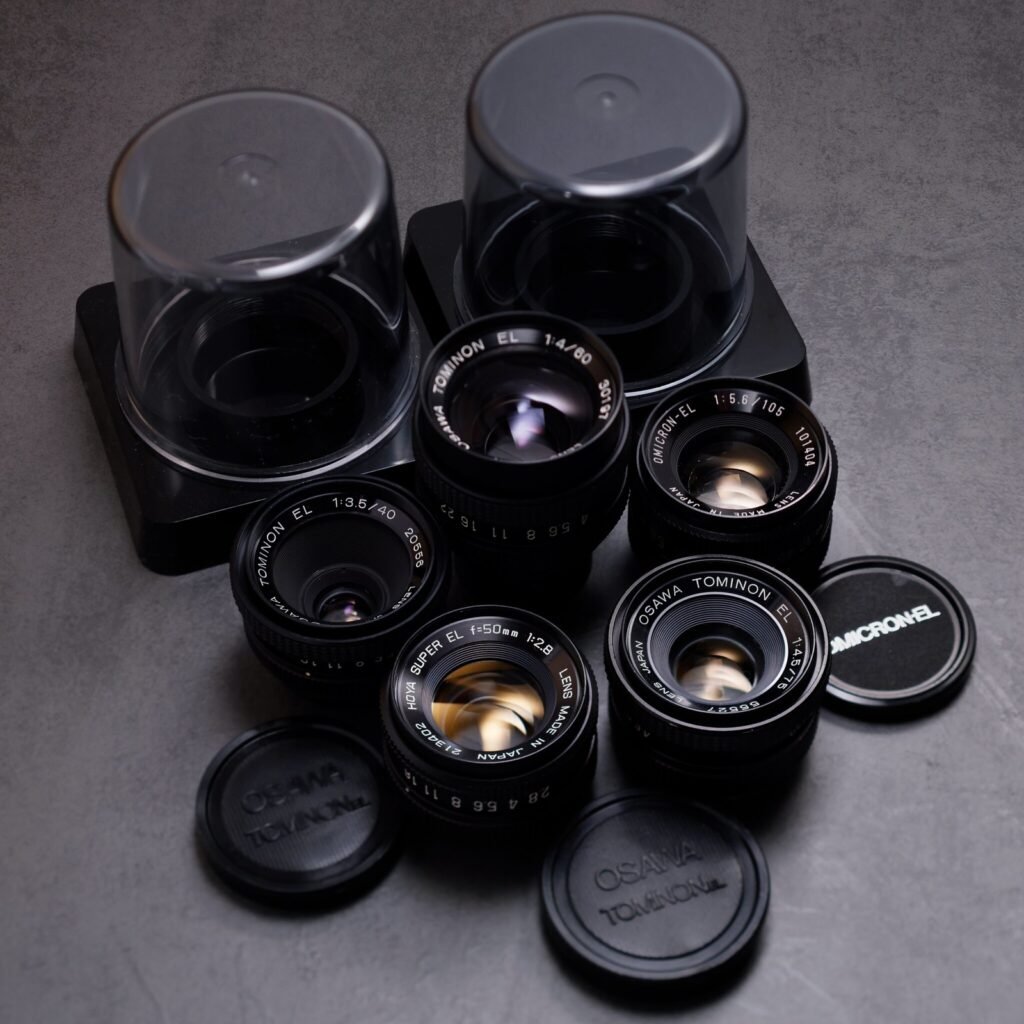
First let’s specify all the different brands/labels these lenses have been sold as:
| Bemecron | Lens name for Omicron-type lenses seemingly specific to Italy (Trademark dispute?) |
| Beseler | Company name of well known US-based maker of enlargers |
| Bogen | Company name of well known US-based maker of enlargers |
| D.O. Industries | Company name of US-based lens manufacturer, re-seller and distributor |
| Hoya | Company name of notable Japan-based lens- and glass-manufacturing specialist |
| Omicron | Lens-name for Omega-branded enlargers and cameras (Simmon/Berkey) |
| Osawa | Company name of a japanese trade giant |
| Yashica | Company name of Japan-based camera maker (parent company of Tomioka) |
Osawa Tominon EL 40/3.5 (aka Bogen / DO Industries / Hoya Super EL / Omicron EL / Yashica Lens)
The 40 mm variant from this series is likely among the better enlarging lenses with this focal length. It features a 6 elements in 4 groups construction and while it’s not as fast as some other 40 mm ELs, a direct comparison with the Schneider Kreuznach Apo-Componon 40/2.8 revealed that the wide open limit of f/3.5 isn’t a deal breaker at all. It’s actually where the Apo-Componon, which shows a surprising amount of CAs and a significant lack of sharpness off-center wide-open, starts to come into its own as well.
Its corner performance is a little bit lacking compared to reference-grade lenses like the WA Rodagon 40/4, but for shots with a centered subject, it delivers very beautiful and smooth rendering and thus comes highly recommended.

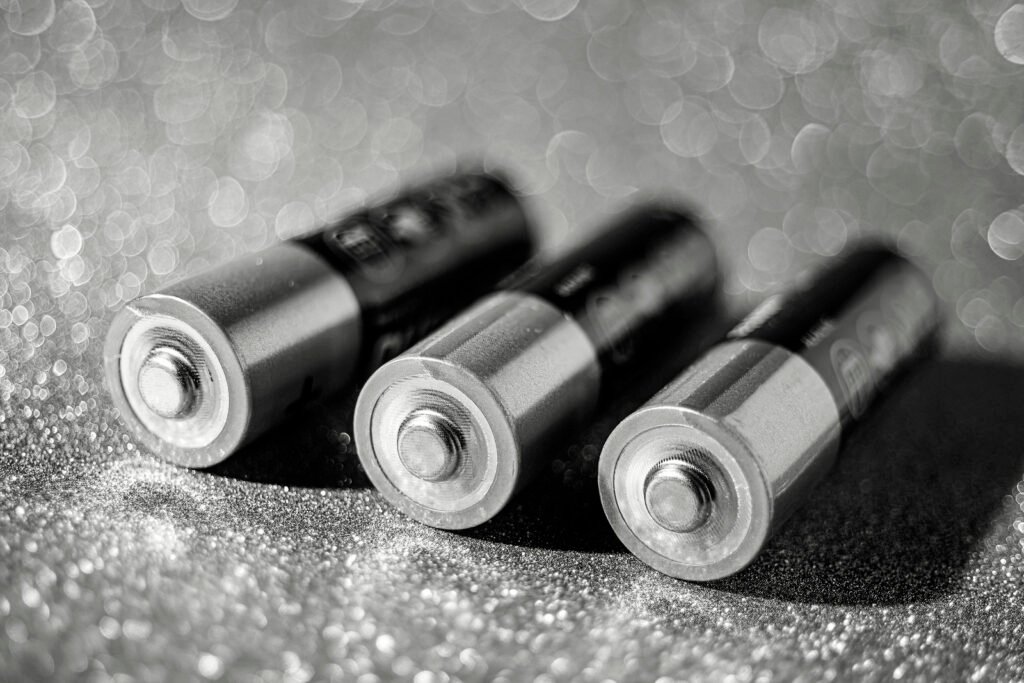



Oli Pritchard, a fellow lens experimenter from the UK discovered the (very likely coincidental) cirumstance that the reversed Hoya Super EL 40/3.5 fits exactly inside of the front filter of many Tomioka Copal E36C lenses. It just slides in there and while it probably should be secured additionally, it’s a pretty tight fit and works really well. I’ve tried it myself and found out that a.) this also applies to the E66C lenses and b.) that it actually varies from sample to sample, if this is possible or not. If you combine an E36C/E66C lens upwards of 80 mm with the Super EL 40/3.5 reversed, you get a very capable combination for macrophotography around 2x magnification. Thanks Oli for sharing this discovery!

Osawa Tominon EL 50/2.8 (aka Hoya Super EL / Omicron EL / Bemecron EL / Beseler Color Pro / Yashica Lens)
The 50 mm lens is a pretty common 6/4 Double Gauss construction and while a good performer both at close-up distances as well as at infinity, it doesn’t really do anything to distinguish itself from the (plentiful) competition. It’s a bit puzzling why Tomioka chose to go for such a common design with this 50 mm lens, considering how ambitious and unusual some of the other focal lengths are, but at the end of the day the standard lens (likely) selling the highest numbers, can’t take too many big risks.
If you’re looking for wide open performance or beautiful bokeh you’re probably well-advised to look somewhere else, but if you’re looking for an overall very good lens across a big range of magnifications this one regularly appears as a real bargain and thus highly recommended.
If you stumble upon one of the Beseler Color Pro versions of this lens, it’s good to keep in mind that there are actually two identically named lenses with the same specs, one of which being the Tomioka EL type, the other one identical with the Computar/Kowa DL line of enlarging lenses. I’ve tried to emphasize some of the differences further down under the 90 mm lens (which is a similar case). While not all of them are true here, the majority can also be used to distinguish the 50 mm lenses.




Osawa Tominon EL 60/4 (aka Bogen WA / Hoya Super EL)
I consider this one of the most interesting enlarging lenses as far as lens construction is concerned. It is said to be a design based on the Biogon, but from comparing it to a number of different Biogon designs, I would rather claim that it’s something between a Biogon and Super-Angulon. Given that the latter is often said to have been a derivative of the first Biogon this probably isn’t too surprising.
The 8 elements in 4 groups construction of the Osawa Tominon EL 60/4 is more asymmetric than most Super-Angulon based designs and also differs significantly from the WA Componon 60/5.6 design created by Schneider for the same purpose. So it certainly occupies a unique place in the realm of enlarging lenses.
As far as I’m aware it only exists in two other variants: As Hoya Super EL and Bogen WA, both with a slightly different design.





Even though it’s a very interesting, unique and great feeling lens with excellent coverage (it covers 6×6 format) and thus lots of options for movements, it suffers from visible chromatic abberations, at least close up and wide open. Being faster than some comparable lenses (like the WA Componon 60 mm f/5.6) this isn’t surprising, but still important to know when used as a taking lens.
Both John Jovic as well as Rob de Loë have tested this lens at infinity and shared some of their results in this thread on dpreview. In comparison with its direct competitors, Rob concluded:
“I used this lens on a Fuji GFX 50R. It’s one of three “wide angle” 60mm lenses made, and in my opinion the best of the bunch. The other two are the Schneider Kreuznach Componon-WA 60/5.6 (worst of the three) and the Rodenstock Rodagon-WA 60mm f/4 (at or maybe just a tick behind the Bogen/Hoya/Osawa lens). I preferred the Bogen over the Rodenstock simply because it’s mechanically beautiful, and because the image circle is a bit larger, which gave me a bit more room to shift.”
If you’re interested in the kind of work Rob de Loë from Canada has done with adapted lenses, I highly recommend checking out his website at www.robdeloephotography.com
And while you’re at it, check out John Jovic’s The Big List of Enlarging Lenses as well, because we’d certainly be poorer on information on enlarging lenses today, if it wasn’t for his pioneering work.
A big shoutout is also in place for member paguru of the german digicamclub forum who shared a lot of excellent research in a thread on the whole family of lenses as well as some interesting comparisons with other lenses.





Osawa Tominon EL 75/4.5 (aka Hoya Super EL / Omicron EL / Bemecron EL / Beseler Color Pro / Yashica Lens)
It’s interesting that Tomioka (similarly to Chugai Computar DL series) really went for it and designed a 6/4 Plasmat design with this focal length as well, while even the Nikon equivalent (El-Nikkor 75/4) used a simpler 4/3 design for example. It actually performed quite well in the tests, both for close-ups as well as shots at some distance, but still isn’t really up on the level of the excellent Fujinon-EX 75/4.5
Given the more interesting 60 mm wide angle design in its own family as well as a (in my opinion) visibly better performing 90 mm variant available, this lens doesn’t really bring enough to the table to be very intruiging, unless it’s just the right focal length. If you do have the need for a 75 mm lens, it seems to be a very good lens in terms of ‘price for its money’ from what I’ve seen.

Osawa Tominon EL 90/5.6 (aka Hoya Super EL / Omicron EL / Beseler Color Pro)
The field of very good to excellent 90 mm enlarging lenses really is a crowded one… and overall this lens does manage to hold its own among the 90/5.6 portion at least. But while it almost matches one of the best among those, the Fuji Fujinon-EX 90/5.6, it doesn’t hold a candle to the clearly superior Chugai Computar-DL 90/4.5 which even has the advantage in almost every aspect at its wide open aperture of f/4.5. The same will likely be true when compared to a Rodenstock Apo-Rodagon 90/4 or Schneider Kreuznach Apo-Componon 90/4.5 but given that those lenses usually cost at least 2-3 times as much, that isn’t a big surprise.
If you’re looking for the very best, this lens will likely not meet your demands, but as a really good value for money option it seems like a good choice if you can find one… they don’t seem to be very common.








The curious case of the Beseler Color Pro 90 mimicking both the Tomioka EL type, as well as the Kowa/Computar DL one. If you know what to look out for they’re actually not hard to distinguish. Here are some hints:


Osawa Tominon EL 105/5.6 (aka Hoya Super EL / Omicron EL / Beseler Color Pro)
I had filed this lens as ‘okay, but not very good’ from a couple of test shots taken some time ago. Using it again for the purpose of this write-up I was actually pleasently surprised. While my overall opinion still stands and I’d claim there’s a number of 105 enlarging lenses which will likely be better than this one, I think it’s a solid lens.
If the pattern of the 90 mm comparison holds true for this focal length as well, the Fujinon-EX 105/5.6 might be a little bit better in terms of contrast and sharpness and there are some faster alternatives (Agfa Color-Magnolar II 105/4.5, Tomioka Copal-E90 105/4.5 etc.) which will likely outshine it significantly at its wide open aperture, but depending on the price it’s still a viable option.


Osawa Tominon EL 135/5.6 (aka Hoya Super EL / Omicron EL / Beseler Color Pro)
It’s quite a while back that I’ve used this lens. It certainly is a solid one, but it also didn’t feel like it is outstanding in any way. I’ve read a couple of times on forums that 135 mm is a focal length sweet spot for regular taking lenses, where pretty much any lens you can buy offers at least decent results. Of course this an oversimplification but I guess there’s at least a little bit of truth to it. However regular 135 mm lenses are usually quite a bit faster than f/5.6, and so most enlarging lenses with that focal length are mostly just unremarkable. Good, but not great (they need too much extension) at macro distances, too slow compared to projection lenses to make it up with good correction or lack of distortion and big enough in size and weight (compared to shorter focal length ELs which often are very small and lightweight) to offer a great benefit compared to some regular 135 mm lenses.
They usually have one big benefit though – and that’s often a huge image circle. So, if you’re shooting medium or large format a lens like this might certainly offer some great possibilities and perhaps even some movements. I would put my bets on the (significantly heavier and more impressive feeling) Fujinon-EX 135/5.6 to be the better lens overall, but because of availability and price considerations the Osawa/Hoya/Omicron or Beseler variant certainly feels like a good package as well.

The Polaroid MP3/4/5/CU Tominon series
Tominon 17/4
Construction: 6 elements in 4 groups, macro lens
Magnification: 10-20x (not quite true, closeuphotography recommends it between 4-5x)
In continuous intervals, I’m asking myself why I haven’t used this lens more… and everytime I’ve set it up again and look at the back of my camera I remember the reason: It has a real problem with a very bright center spot, likely caused by some internal reflections. It seems almost impossible to avoid, unless the lighting is adjusted to a degree, which limits creative freedom to a minimum.
That’s why – despite its very impressive optical qualities – I’ve so far struggled to find many situations, where it can be used effectively. There are two versions of this lens, one from the Polaroid MP4 camera, with a longer mount and another one with a shorter mount from the Polaroid CU5 camera. The latter one seems preferable and may also have less problems with light leaking in, but is also quite rare in comparison.
I’m pretty sure the problem can be solved by some internal flocking or some form of self-made lens hood. So far I just had too many good ready-to-use alternatives to attempt that. Because it seems to have gained some reputation among macro photographers this lens usually is the most expensive of its series. However if you’re patient you still can find it for reasonable prices.
You can find a lot more details and also excellent technical testing of this lens on closeuphotography.com.

Tominon 35/4
Construction: 4 elements in 3 groups, reverse Tessar
Magnification: 5-7.5x magnification (while it certainly can be used for the official magnification given, it’s likely best around 2-3x, according to closeuphotography )
Unlike the the 17 mm version, I’ve used this lens regularly and feel like it is a very nice, high-quality and easy-to-use lens which doesn’t disappoint. I’ve compared it to excellent macro lenses like the Zeiss S-Planar 32/4 or Noritsu 32/4 and it does hold up pretty well. It won’t match the best scanner lenses at 2:1 or 3:1 but for non-scientific comparisons, the differences will likely be minimal. The prices for this lens are still quite reasonable usually. The main challenge (as eluded to earlier) seems to be sample-variation. Robert OToole mentions the following about that topic:
“The Tominons use all-metal barrels and aperture rings, but the Tominon 35mm (and 17mm) lenses have quite a bit of IQ variation between samples, so I would recommend buying lenses from sellers that accept returns. (…) In my experience the cleanest lenses are not always the best performers. I have tested 4 or 5 of the 17mm units in the past, and I am on my 3rd 35mm Tominon lens. The lens I own now was purchased as new-old-stock.”
You’ll find lots more information about mounting, performance and comparisons about this lens on closeuphotography, so I’ll rather invite you to take a look at some images made with this lens here:





Tominon 50/4.5
Construction: 6 group symmetric triplet
Magnification: 1.5-5x
This lens really isn’t particularly great at anything and neither is it very bad… and in a way that’s probably what holds it back the most. At f/4.5 it’s not very fast, so you will have a lot more options when shooting with one of the common 50/2.8 enlarging lenses. And compared to lenses of the E36 series this one doesn’t provide any outstanding results in terms of sharpness or correction or usable magnification range.
It does have a nice, smooth rendering though and if you can work around the slow wide open aperture, it’s also able to produce some interesting bubbles under the right lighting conditions. So in a way: “A triplet on speed without much speed” and yes, that title won’t make you famous around the world, I suppose.
A couple of people online have wondered about the unusual definition of its construction as a “6 group symmetric triplet”. There have been suggestions that this is an error, but it’s also possible that it’s just an unusual way of describing a 6 elements in 6 groups design, where the diaphragm is right in the middle.




Tominon 75/4.5
This lens is called a reverse Tessar design in official material. That type of construction is actually not uncommon in high magnification macro lenses. Another notable series which uses this design is the Taylor Hobson Ental II enlarging lens family. But while those lenses are pretty good, both close-up as well as at some distance, the Tominon 75/4.5 doesn’t seem to hold up very well at distance.
At around 1x magnification however it is quite good in terms of quality, even though the 1.5-3x recommended magnification mentioned in some price list might once again be a little bit much for the lens. The Polaroid MP4 manual shows examples of the lens being used for slide duplication, which matches my impression of its ideal use.
That being said, if you don’t care too much about sharpness, the lens offers an interesting and beautiful rendering at distance, so it certainly can be used effectively outside of its narrow optimisation.




Tominon 105/4.5
I have never owned or used this lens, but given that it’s a Tessar – in regular orientation, contrary to the 75 mm variant – I would guess that it might work better at distance.
While it could be equally good or even slightly better at its optimized magnification (Which likely is somewhere around 0.5x) I doubt that it matches some of the better 6-element enlarging lenses (likely including the Osawa Tominon 105/5.6) in most aspects, outside of it.
Here’s a comparison, where someone on a german large format forum used it to digitize a negative and found it to be visibly better than a Schneider Kreuznach Componon 105 mm at that task (thus hinting at excellent optimization at a certain magnification range): https://forum.grossformatfotografie.de/forum/thread/16797-schneider-componon-105mm-vs-polaroid-mp-4-tominon-105mm/
Tominon 114/3.8
I’ve never owned or tried this lens but I think it is usually considered a regular taking lens, so I’m only mentioning it here for completeness sake.
Tominon 114/4.5
I’ve never owned or tried this lens but I think it is usually considered a regular taking lens, so I’m only mentioning it here for completeness sake.
Tominon 127/4.7
I’ve never owned or tried this lens but according to Dan Fromm it was the standard lens for the Polaroid CU5, optimized for 1:1 , but also shoots well at distance.
Tominon 135/4.5
This 4/3 Tessar design lens, is made for 0.1-1.2x magnification according to offical materials. From my observations it’s not outstanding in terms of sharpness/image quality, but it is among the faster industrial/repro/enlarging lenses of that focal length and it does have 12 aperture blades and thus wonderful round bokeh.
Even though it’s a Tessar and not a Triplet, this lens creates outlined bokeh bubbles like a Trioplan under the right circumstandes, so I guess this could indeed be one aspect of it, which makes it interesting despite its shortcomings in other areas. At f/4.5 it’s neither particularly fast, but also not slow for a 135 mm lens – at least one optimized for the close-up range.


Tominon 180/5.6
I’ve never owned or tried this lens. Dan Fromm mentioned it being a Triplet that fits into a #1 shutter, and considers it a bad lens at all distances.
Other Yashinon and Tominon lenses
Not every lens labeled Yashinon was indeed made by Tomioka, even though it applies to a vast majority of them. Most Yashinon projection and movie camera lenses for example have been made by a company called Zunow. While there is no definitive proof for it, my assumption is, that every Tominon labeled lens has been made by Tomioka though.
E-Yashinon-DX 21/3.5

This tiny lens which looks a bit like a satellite to me, is quite a curiosity: It‘s part of a so-called ENLA-unit a device used for enlarging miniature film formats, via a regular enlarger – if my understanding is correct. If you want to find out more about these formats and lenses, visit this wonderful site: www.subclub.org/darkroom/lenses.htm
This lens was part of the so-called ‘Atoron unit’ and even though it doesn’t state a manufacturer likely made by Tomioka.
I haven‘t done a lot of testing yet and the quality of the images shot with this lens varies quite a bit, but so far I think it works best reversed and with a tube lens. I think it’s not quite up to the Zeiss Luminars or a reversed Schneider Componon 28 mm, but it‘s not bad at all in my opinion…




Tominon 53.85/4.5 (15x)
I wasn’t able to find any image of this lens. If you have one, please let us know about it.
Tominon 38.1/4.5 (23.4x)

This lens was mentioned on the photomacrography forum and from the description and a couple of sample images, I think it’s safe to say it will likely perform similarly to the 32x one.
Tominon 26.9/4.5 (32x)
Robert OToole has tested this one and found it to be a very good performer at 2x magnification on APS-C format.
While I have no idea which specific device it was made for the 32x – 165 which seems to suggest that it was likely used in some microfiche reader or similar application.
I’ve mentioned a couple of similar by Agfa microfilm/microfiche lenses (Mikrogon) in our article on Agfa industrial lenses but while this Tominon is likely a step up from those in terms of image quality, it might be bit more ‘tame’ compared to some other microfiche lenses, meaning it doesn’t provide quite the uniquely (flawed, but in certain cases) interesting rendering of those.




Yashinon 32/3.5
Thankfully another lens with a test on closeuphotography providing some more information about its performance as a macro lens (which seems particularly good reversed at around 3x magnification).
I’ve tried it as well and found it to be very sharp in the center, however It’s probably best suited for the APS-C or smaller format though because even at macro distance the corners don’t look good (they tend to look really busy and harsh, so unfortunately not like some projection or cine lenses for smaller formats, which sometimes can still provide an interesting smooth look even with vignetting) and show quite a bit of CAs as well.
As robert mentions in his overview, this lens is actually a f/1.7 lens according to some faint inscription on its front, but was at some point retro-fitted with a baffle limiting it to f/3.5 and therefore also got a new inscription. That’s actually how we know it’s a Yashica/Tomioka lens, even though the new labeling doesn’t mention that.
It would be interesting to know what it was used for. While it looks slightly similar to the Tominon barrel lenses mentioned below, it’s unclear if there is any connection.




Tominon 110/4.5

This lens certainly doesn’t seem like a great fit to be used as a taking lens. Why? Because it has a mirror on its rear end. Of course I wasn’t able to withstand the temptation to try it anyway, so I’ve just removed the mirror and…
… was disappointed, because it didn’t seem to work at all. I got the impression I was only using half a lens (which might be quite accurate, given that it sounds reasonable that light wanders through the lens elements twice in a mirrored lens like this – at least that’s how I image it.
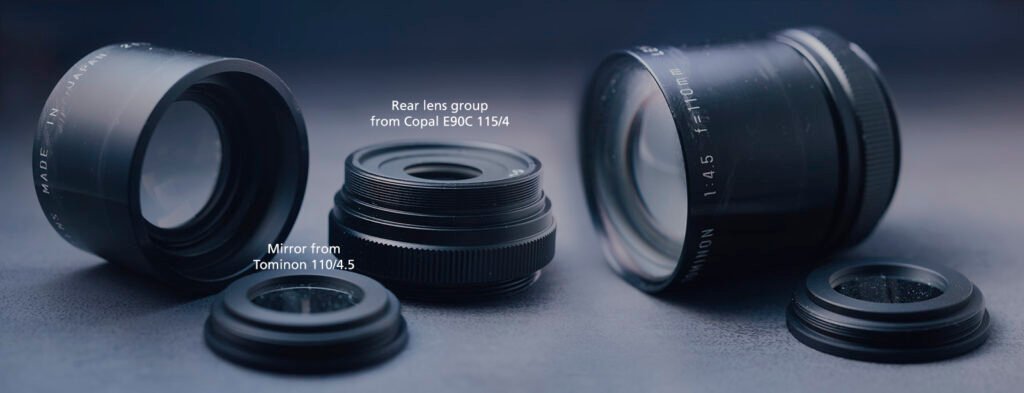
So I’ve tried to slide in the rear group of one of the E90C lenses with a similar focal length. It actually fit in almost exactly (even though the threads don’t match) and also appeared to make the lens work reasonably well.
It will certainly take more than this to make this a viable tool for more than a couple of test shots, but I’m sure there’s a relatively easy solution out there to make this lens work, and I suspect it could very well have a surprise or two up its sleeve. Here are two shots taken with this configuration:


There’s a very similar lens by Carl Zeiss (Oberkochen) with identical specs, called Planitar. It does seem likely that these lenses were made for the same application. The Zeiss Archive mentions the following about the use of the Planitar:
“Das Planitar 1:4.5/110 ist ein Spiegel-Linsen-Objektiv und für die Mikrodokumentation vorgesehen. Es hat einen Bildkreisdurchmesser von 220 mm und einen Abbildungsmaßstab von 1 : 1. Der Abstand zwischen Objekt und Spiegelfläche beträgt 229 mm (1976 233 ± 3.5). Der optische Aufbau besteht aus 2 Linsen in 2 Gruppen.”
(Zeiss Archive)
"The Planitar 1:4.5/110 is a mirror lens and is intended for micro-documentation. It has an image circle diameter of 220 mm and an image scale of 1:1. The distance between the object and the mirror surface is 229 mm (1976 233 ± 3.5). The optical structure consists of 2 lenses in 2 groups." (Auto Translate)

Tominon (IBM) 230/4.5

Yashica Boards admin Lumiworx has adapted this giant beast of a lens onto a Speed Graphic camera for test purposes and documented the process. It seems like a very challenging lens to adapt because of its size and weight, but also the lack of any mounting threads.
Check out Lumiworx’ website where you can find out a lot about various Yashica-made and related cameras and lenses as well as other interesting stuff.

Tominon 280/4.5
See above… this one might be even bigger and heavier.
Projection, movie camera & TV lenses
Eiki Tominon 16-P 50/1.4 (Super-16 projection lens)

Tominon 25/1.8 (TV lens)

I have no idea what this tiny 25 mm lens was used for. It has a focusing mechanism but no variable aperture and the tiny image circle makes me think it’s likely an 8 or 16 mm movie camera lens or some kind of CCTV lens. While it doesn’t seem very common there are many lenses around with identical specs.
Usen in reverse and with a tube lens, this one actually is a decent macro lens. Of course DOF is really minimal at f/1.8 but via focus stacking it’s possible to get good results. Even CAs are somewhat under control, which is not often the case with these lenses from my experience so far.


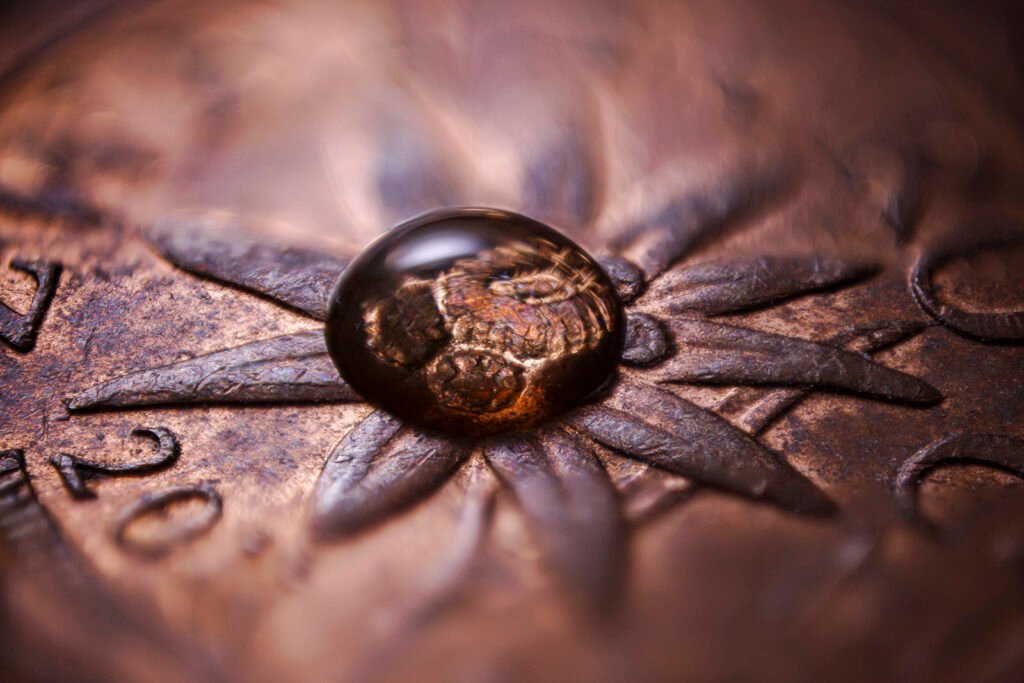

Ricoh Tominon Zoom lens 10-30/1.8 (Movie camera lens)
This 10-30 mm zoom lens was used on a double 8 mm camera called Zoomphonic by Ricoh from around 1965.
It’s not known whether Tomioka manufactured several of those lenses, but it seems possible, given that Yashica as well as Ricoh – both companies with numerous movie camera models on the market – were regular customers of Tomioka-made lenses.
What is documented on the other hand, is that many of Yashica’s movie camera lenses were made by another manufacturer called Zunow. If you want to read up on the matter, here’s an interesting site covering some of it:
http://yashicatlr.com/Yashica8.html#otherlenses
At the heart of the matter…

As you can probably see from reading (hopefully just part of) this article, this hasn’t been an attempt to burst any of the big Tomioka myths, but rather just provide you an overview of a couple of different – in part lesser known – lens families and lenses by a optical company, who was mostly acting behind the scenes and let others do the sales pitches, but proud enough of their work to display their Tomioka and Tominon signifiers on a vast amount of different lenses. A lens maker really varied in their output, creating a vast amount of lenses for small and giant customers around the world, ranging from large format to 35mm taking lenses, optics for projection and video, enlarging, scanning and many other industrial applications.
And in presenting these lenses and the images made with them, I’m also really trying to show some respect to the incredible amount of work which must have gone into the creation of them, the ingenuity of the designers as well as the craftsmanship and skill involved. It really is a joy to use many of the lenses shown, even today, decades after they were built and in some ways they still hold up incredibly well, even when compared to modern high-end macro lenses.
Yes, you might call me biased when it comes to some these lenses, and I would certainly admit to that. I still think many of the lenses mentioned in this article are outstanding and regardless if some of them were really made in cooperation with Zeiss or not (we’ll likely never know 100%) I feel like they’re a true statement to the capabilities of a manufacturer, which has been called into question numerous times, because of hype tactics by online sellers.
A deeper dive into the history of Tomioka is found in the companion article here: The Tomioka Story. If anyone is able to shed light on unsolved mysteries or untold stories, or willing to clarify specs, dates and details, please don’t hesitate to reach out to me – any help is greatly appreciated!
One last word
In case you like some of the sample images provided above, perhaps consider taking a look at my flickr-page (flickr.com/photos/simple_joy) where I show my photographic experiments with a vast amount of unusual manual focus lenses. So, if you’re also on that aging, but still trucking-along platform for some reason, get in contact there or add a comment here. I would love to hear from you!







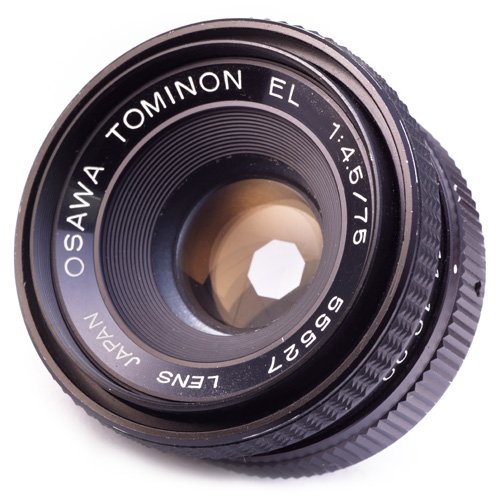
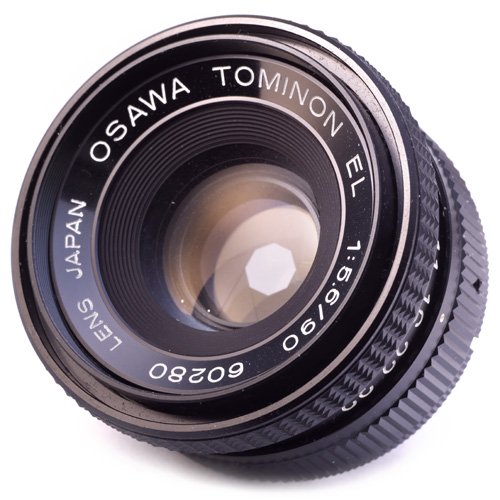

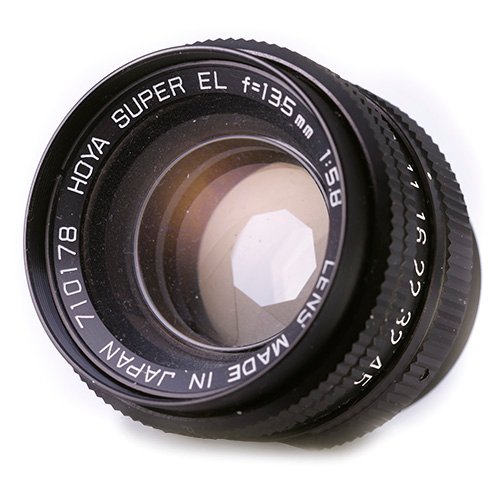







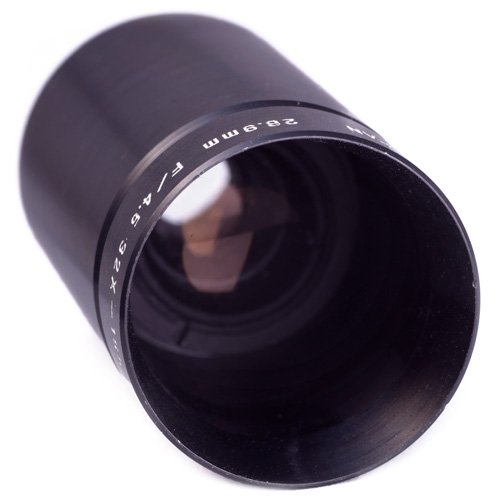


sir,
again ,I have read your piece with interest and admired your brilliant illustrations, I cannot resist “nörglen” a bit when you imply thet similar lens diagrams may indicate similar specifications (the illustartions of xenotar nd planar like constructions),
The exact choice of radii, ditances , glass types and mechanical precision will decide performance, so even if diagrams are similar nothing can be concluded about who designed and produced the optic and no indication of performance should follow.
p.
Thanks a lot! You’re right, it’s certainly good to be cautious not to imply similar specifications from a similar lens diagram. Can you point towards the specific paragraph or sentence you mean, so I can try to rectify that? That would be great, thanks!
not paginated,so somewhat difficult to refer precisely, but what caught my attention was your diagrams at he start of this piece where your illustrate the Zeiss and the Yashica macro lens diagrams. However, your very well chosen illustrations made me forget my “unbedeutende einwendungen”, and still do-
p.
The 127/4.7 Tominon was the standard 5″ lens for the Polaroid CU5 . It was made to be used around 1:1 but shoots well at distance.
You missed a 180/5.6 lens that’s threaded at the rear to screw into a #1 shutter. It seems to be a triplet. I have one, s/n 1218. It is lousy at all distances.
Thank you very much, Dan! I’ve included your information. I have another lens also made for the CU5, if memory serves me (the Mamiya CU 65/5.6) which is among my favorite lenses of its kind.